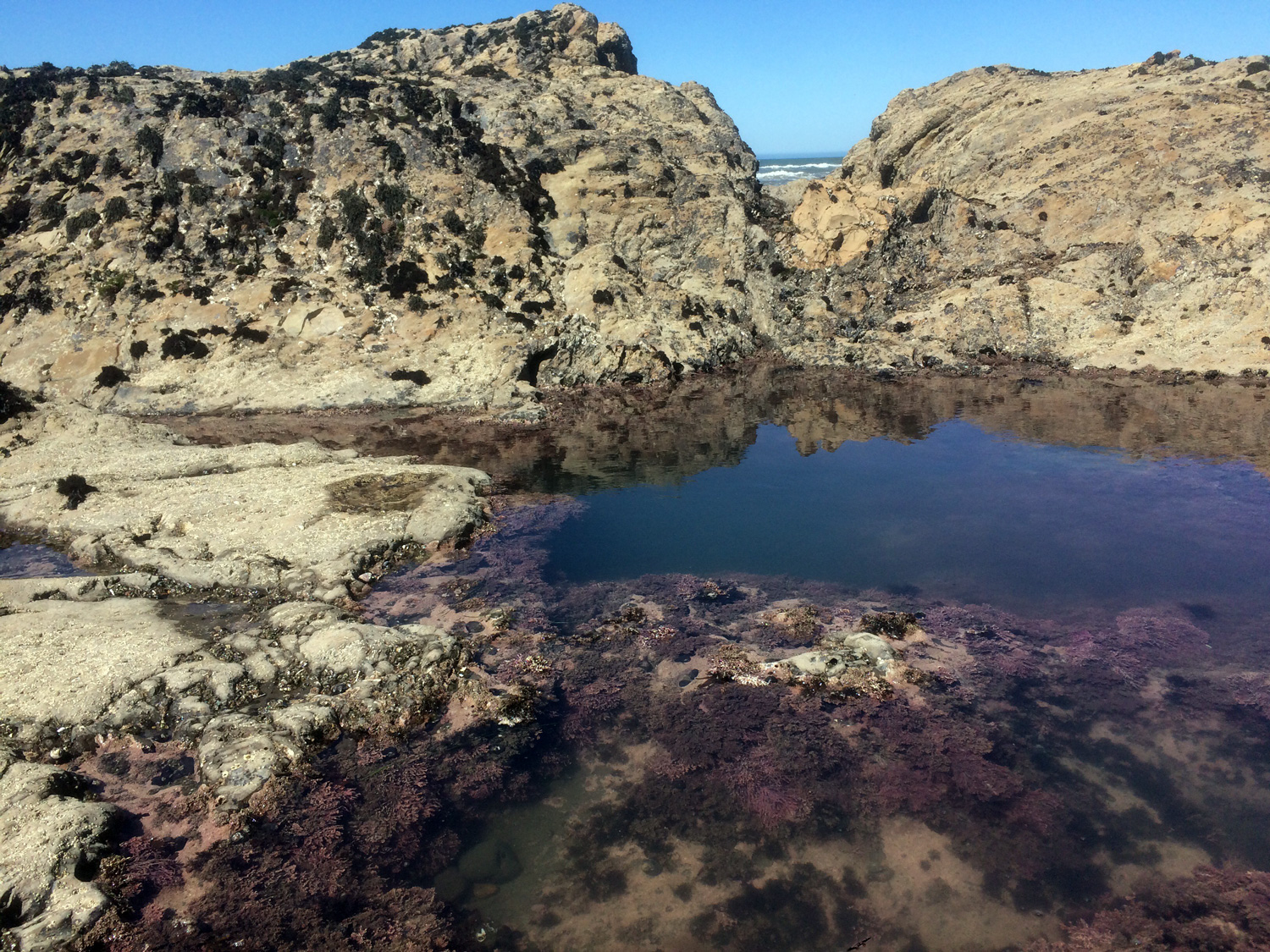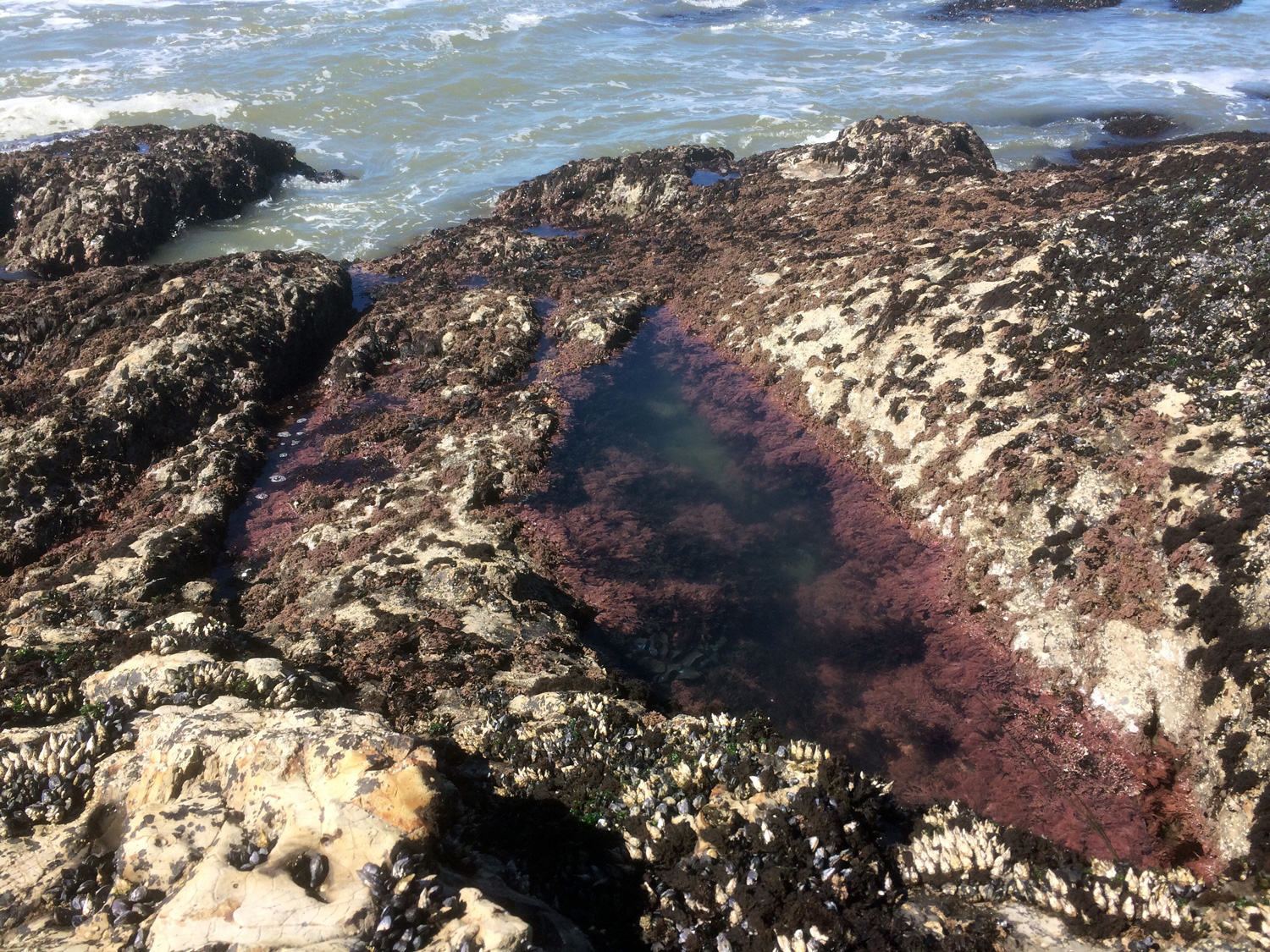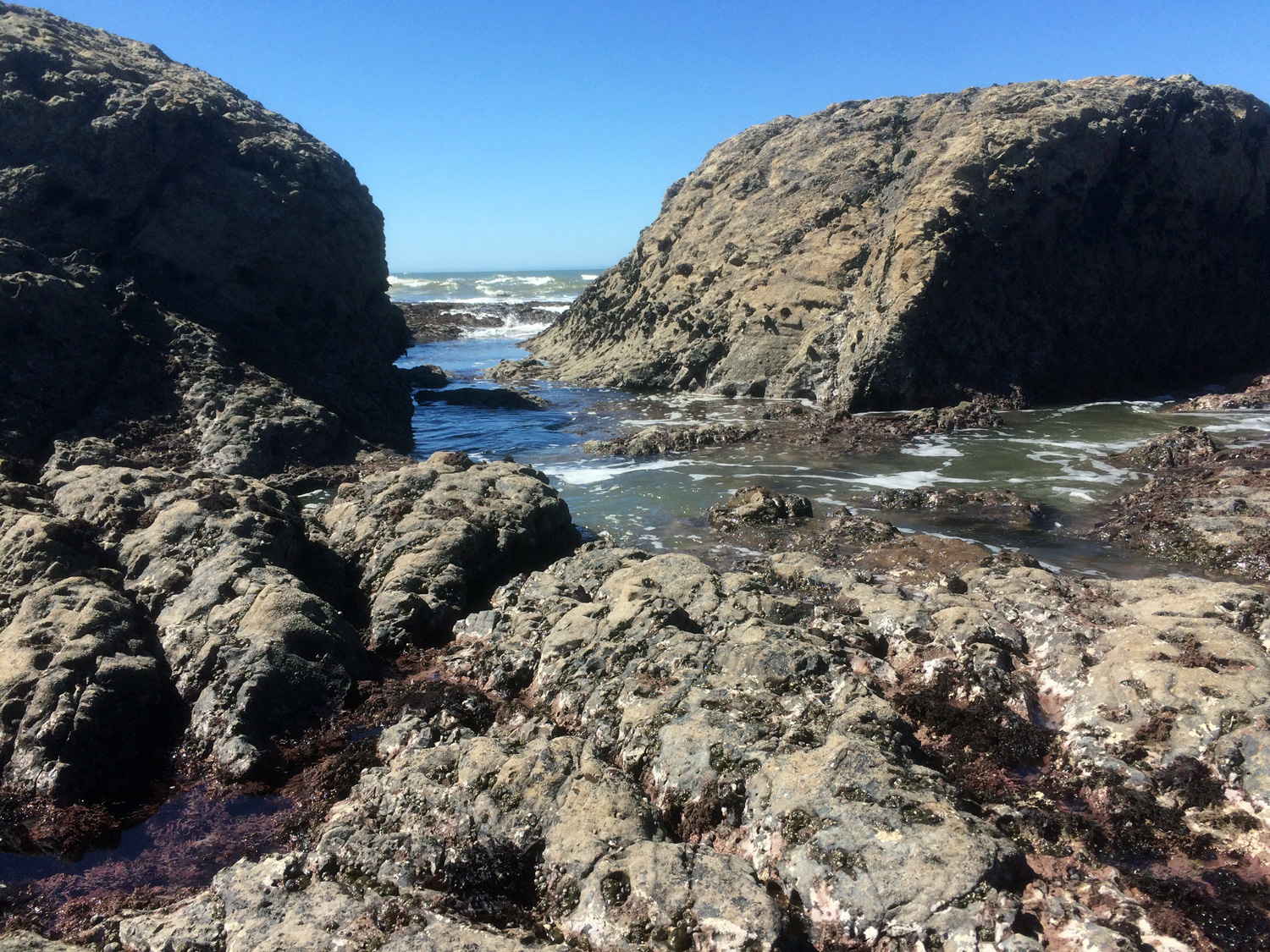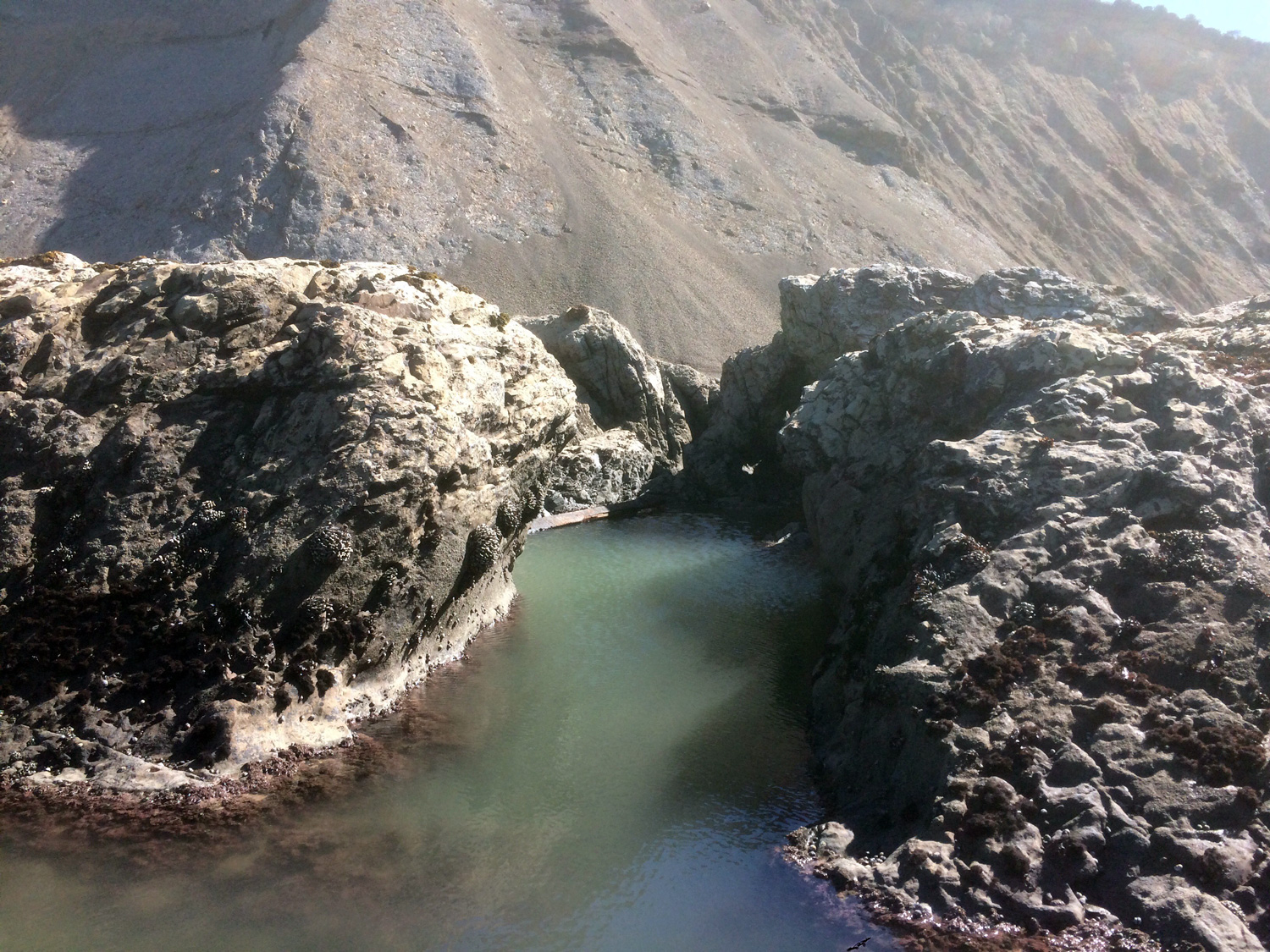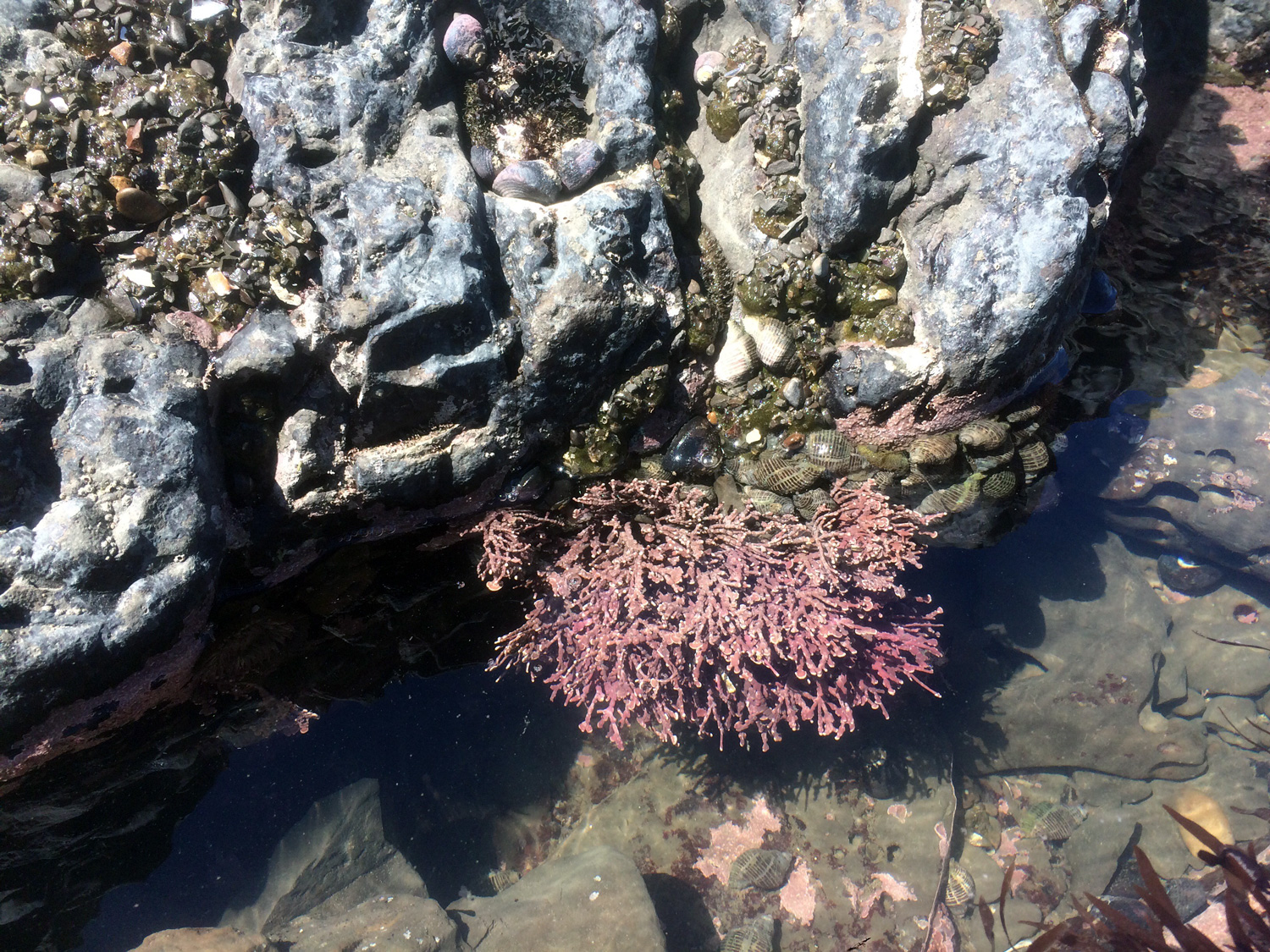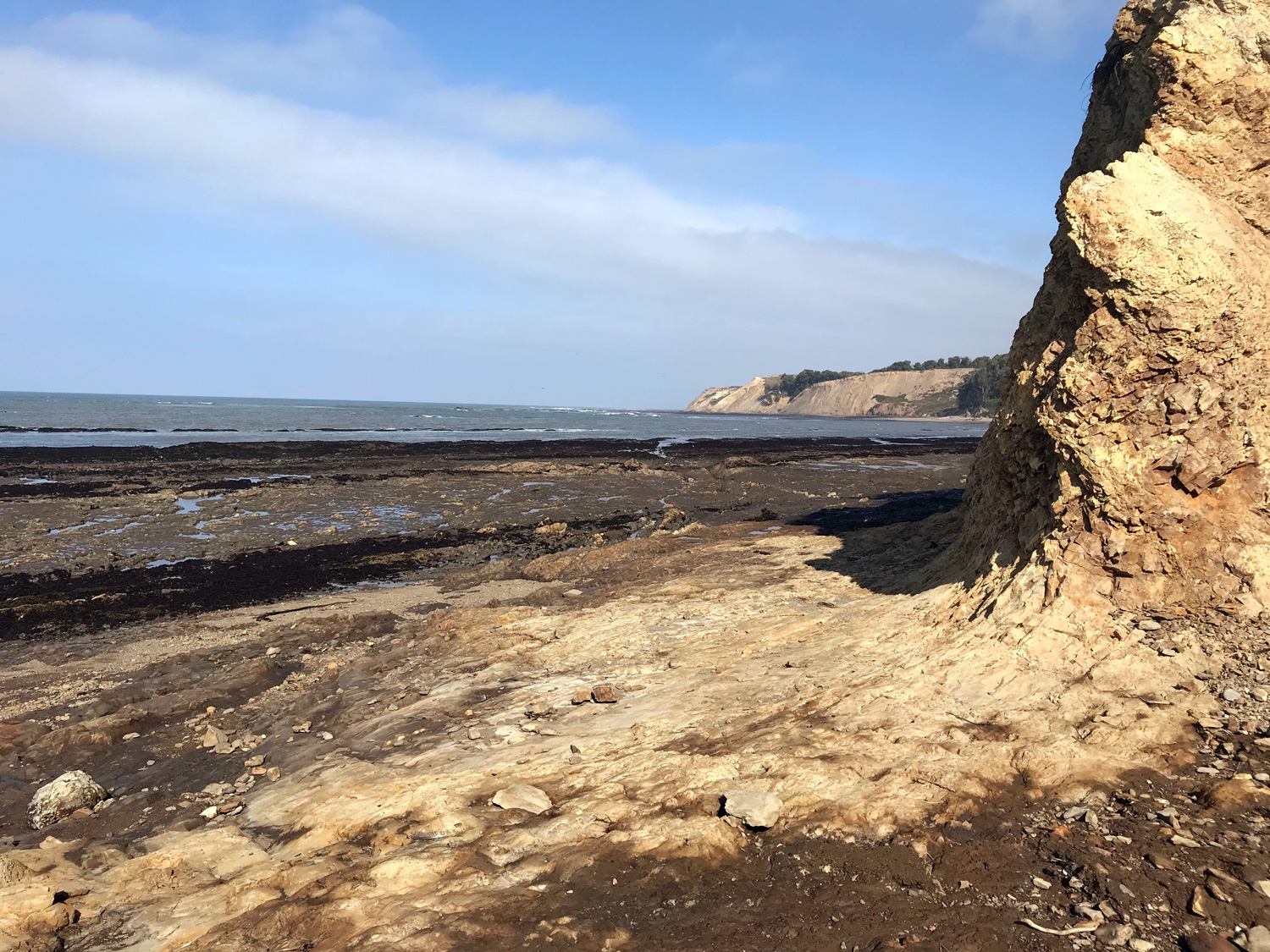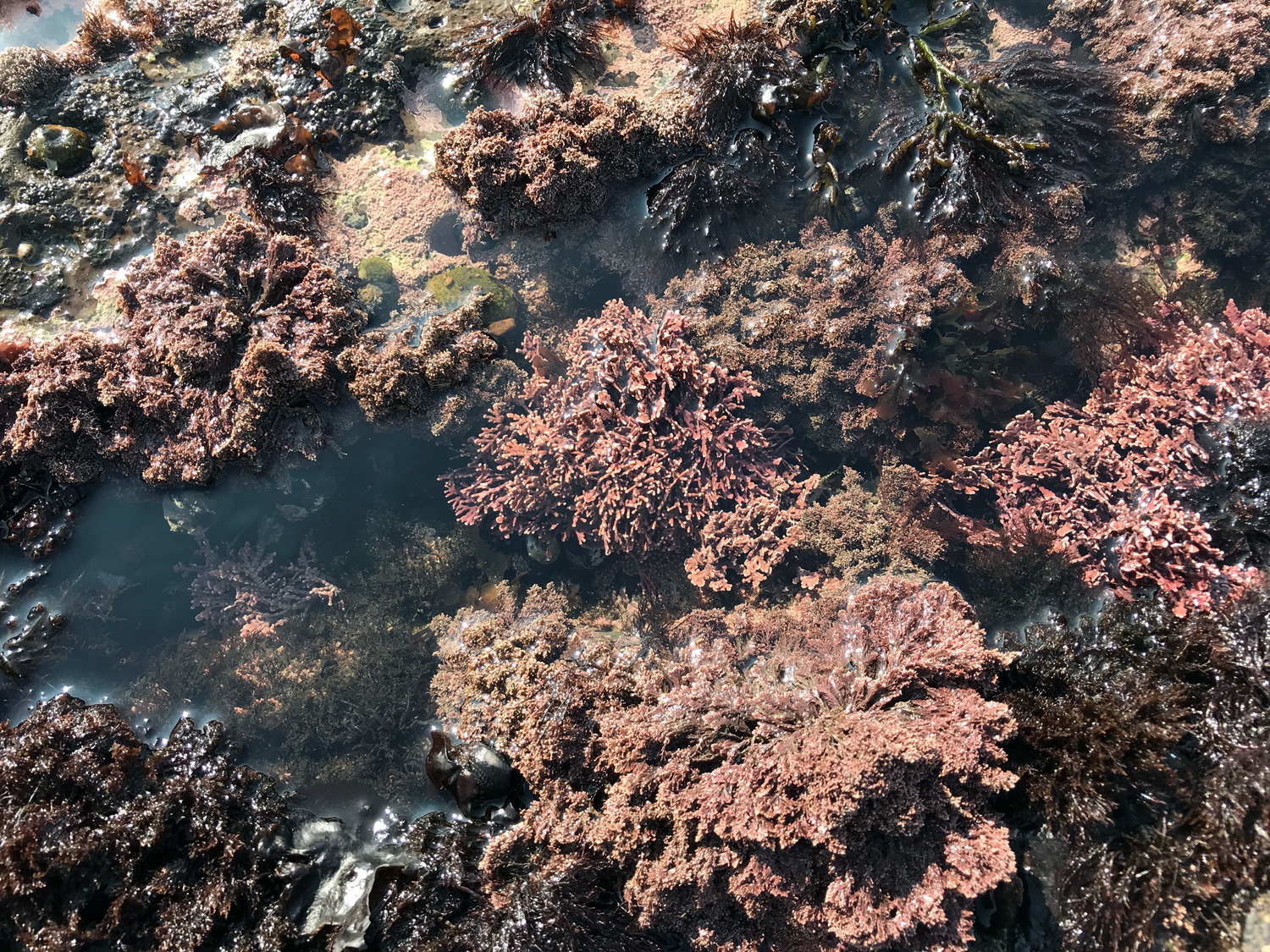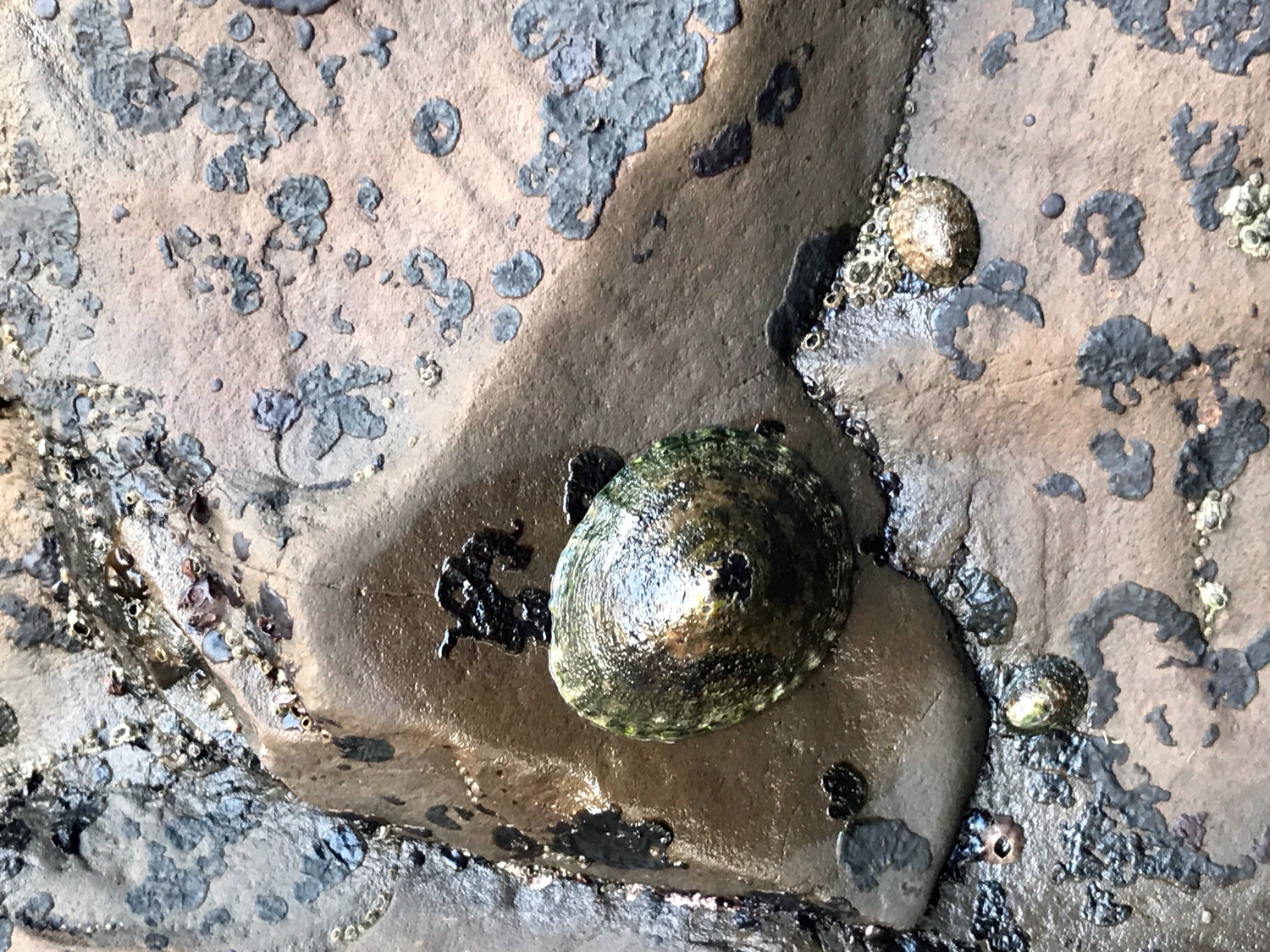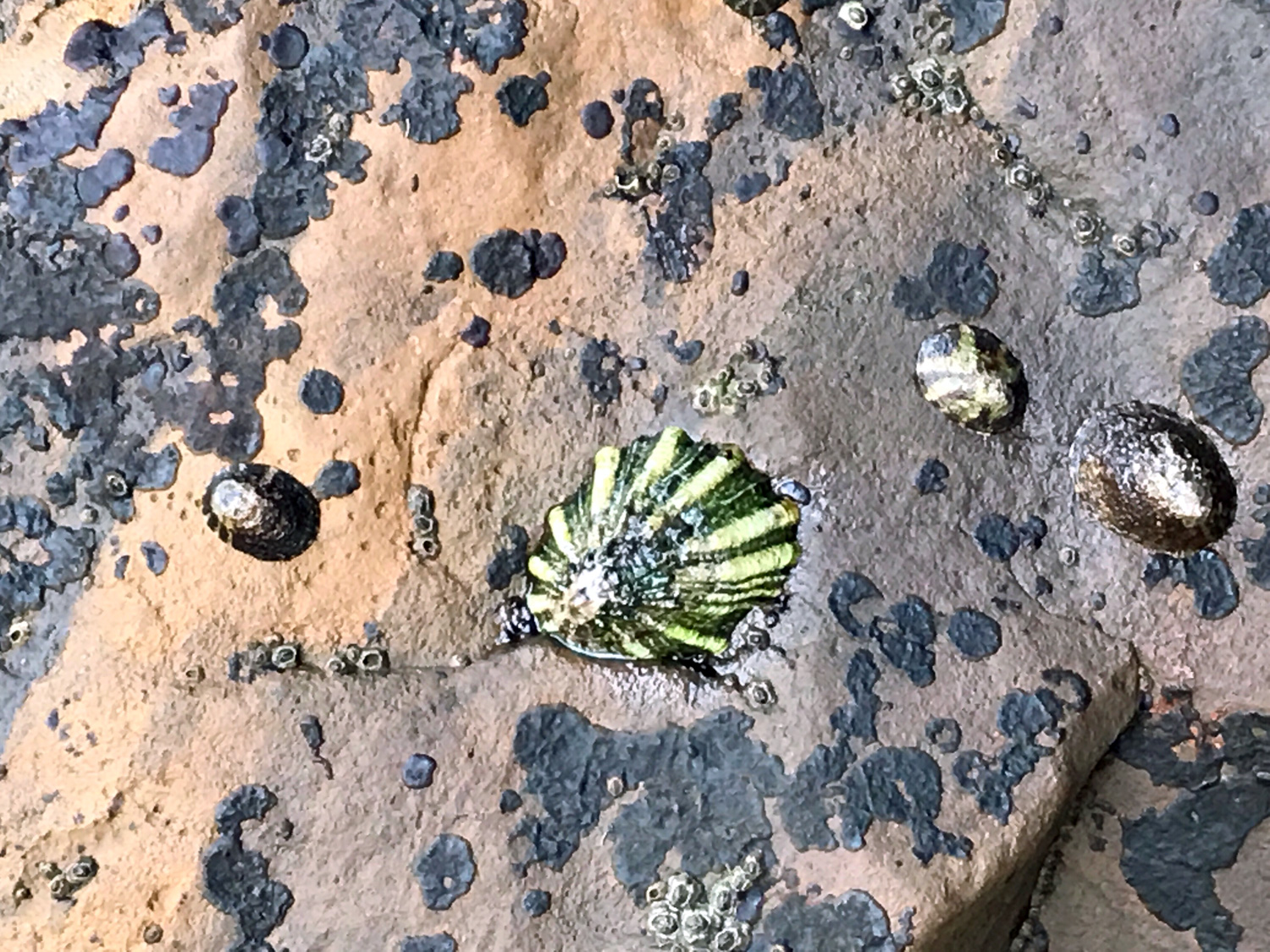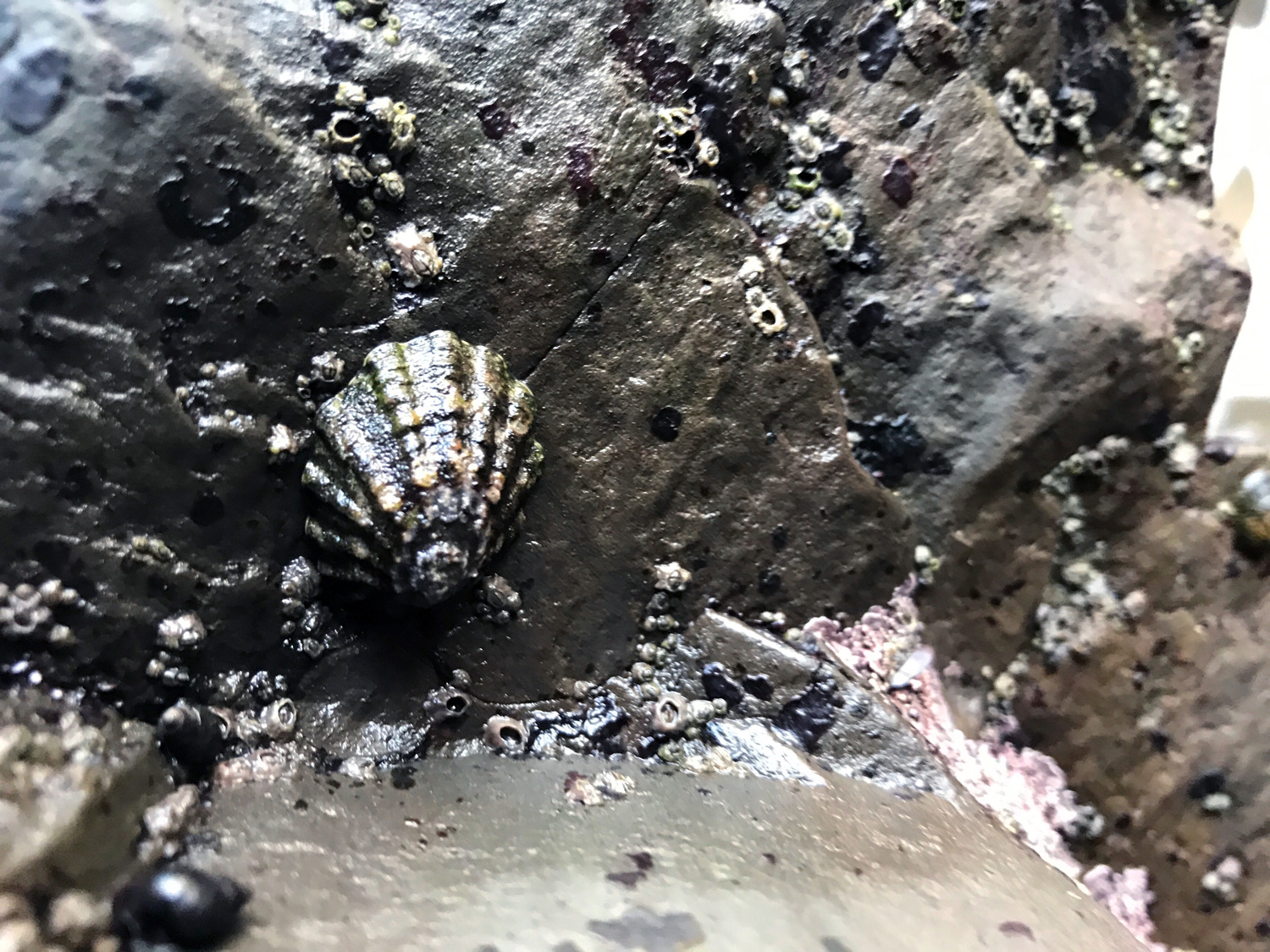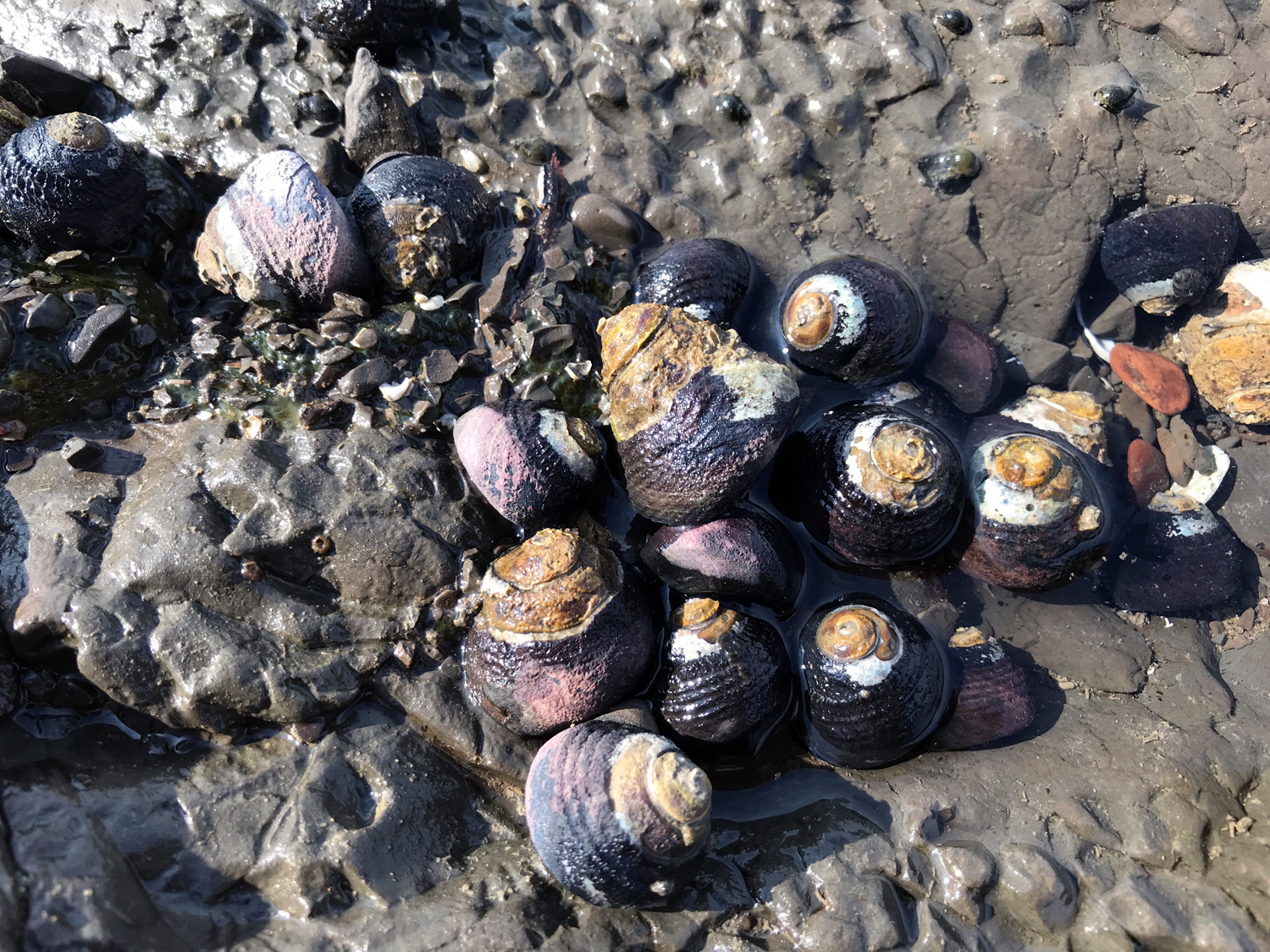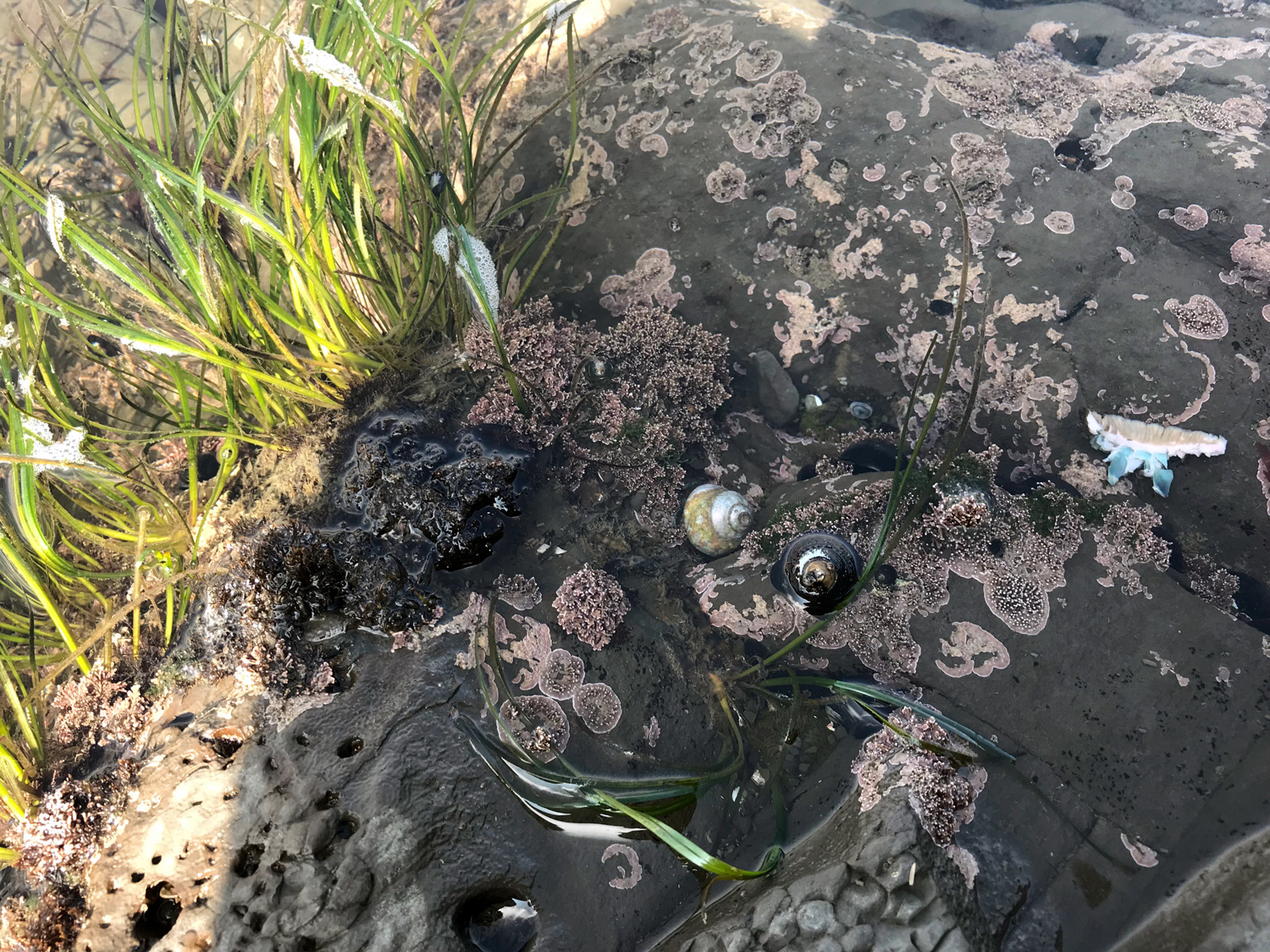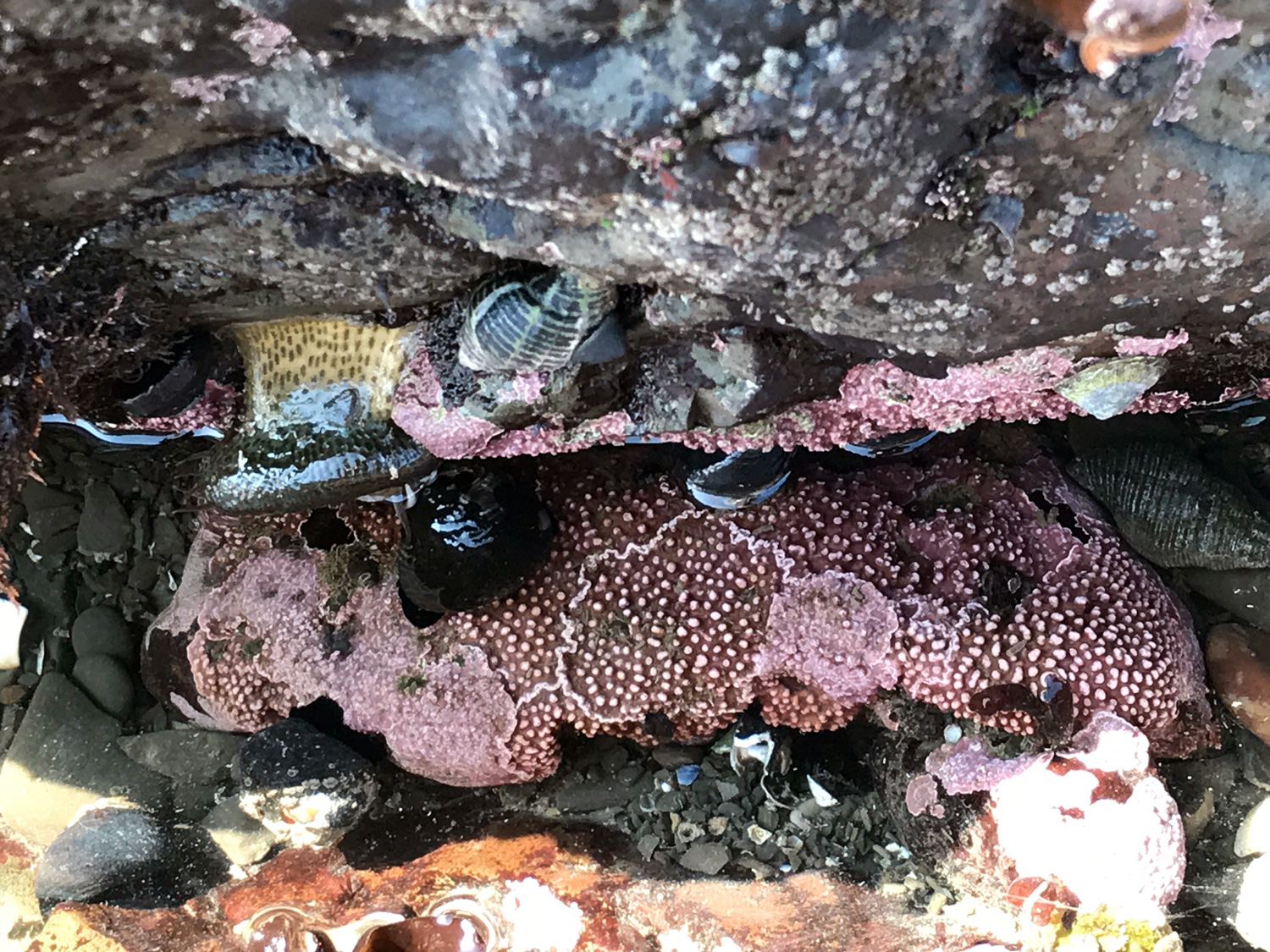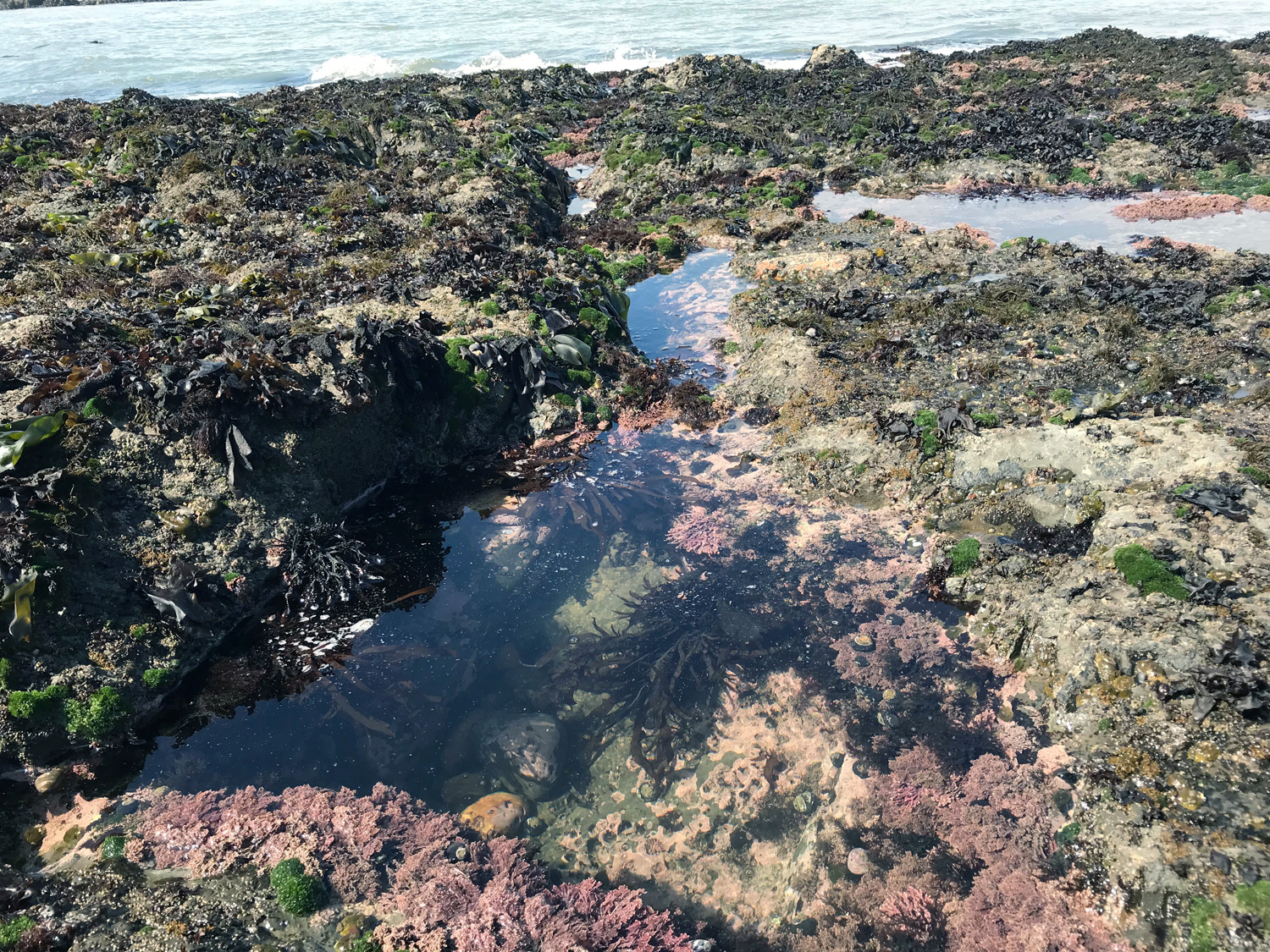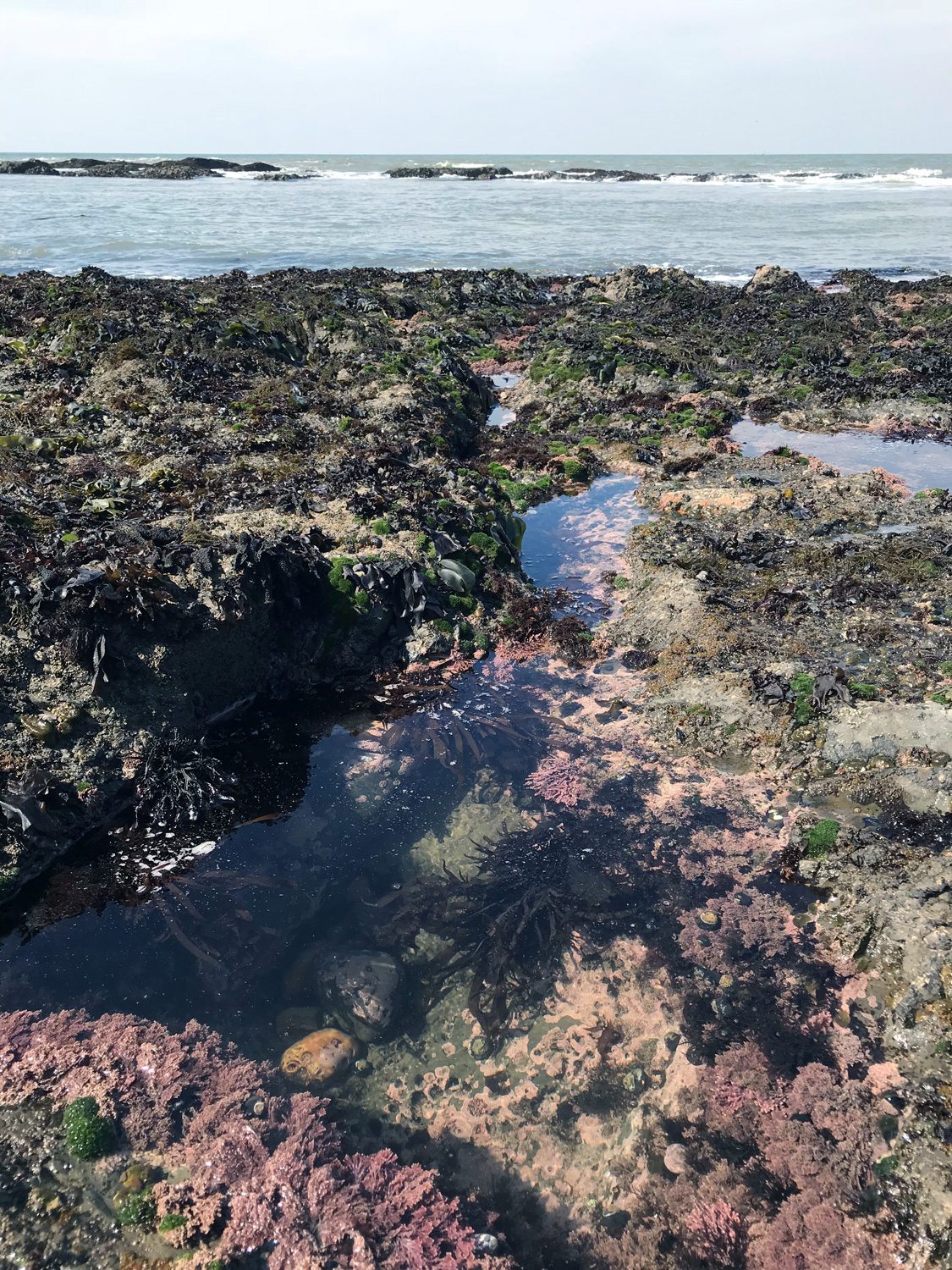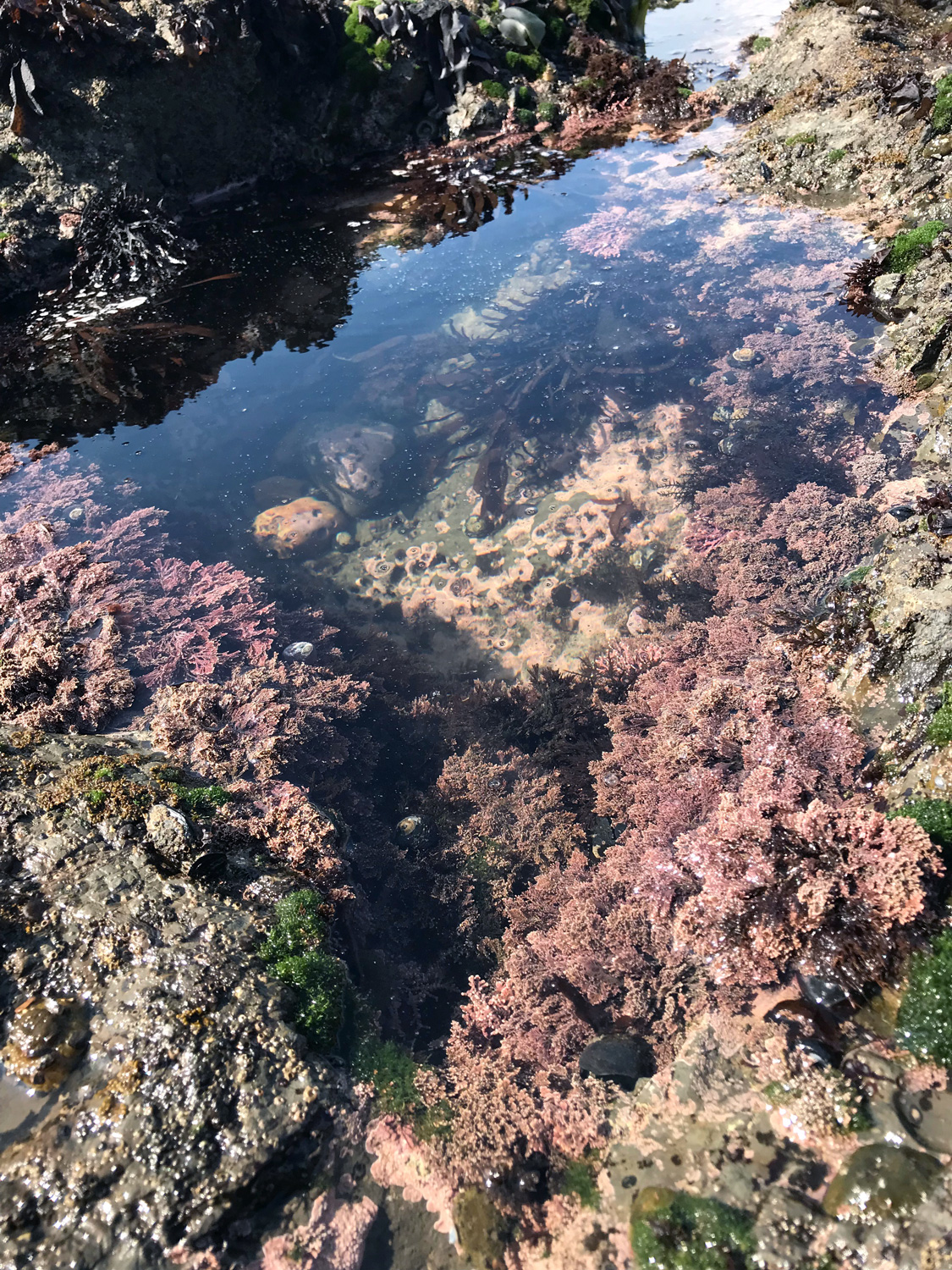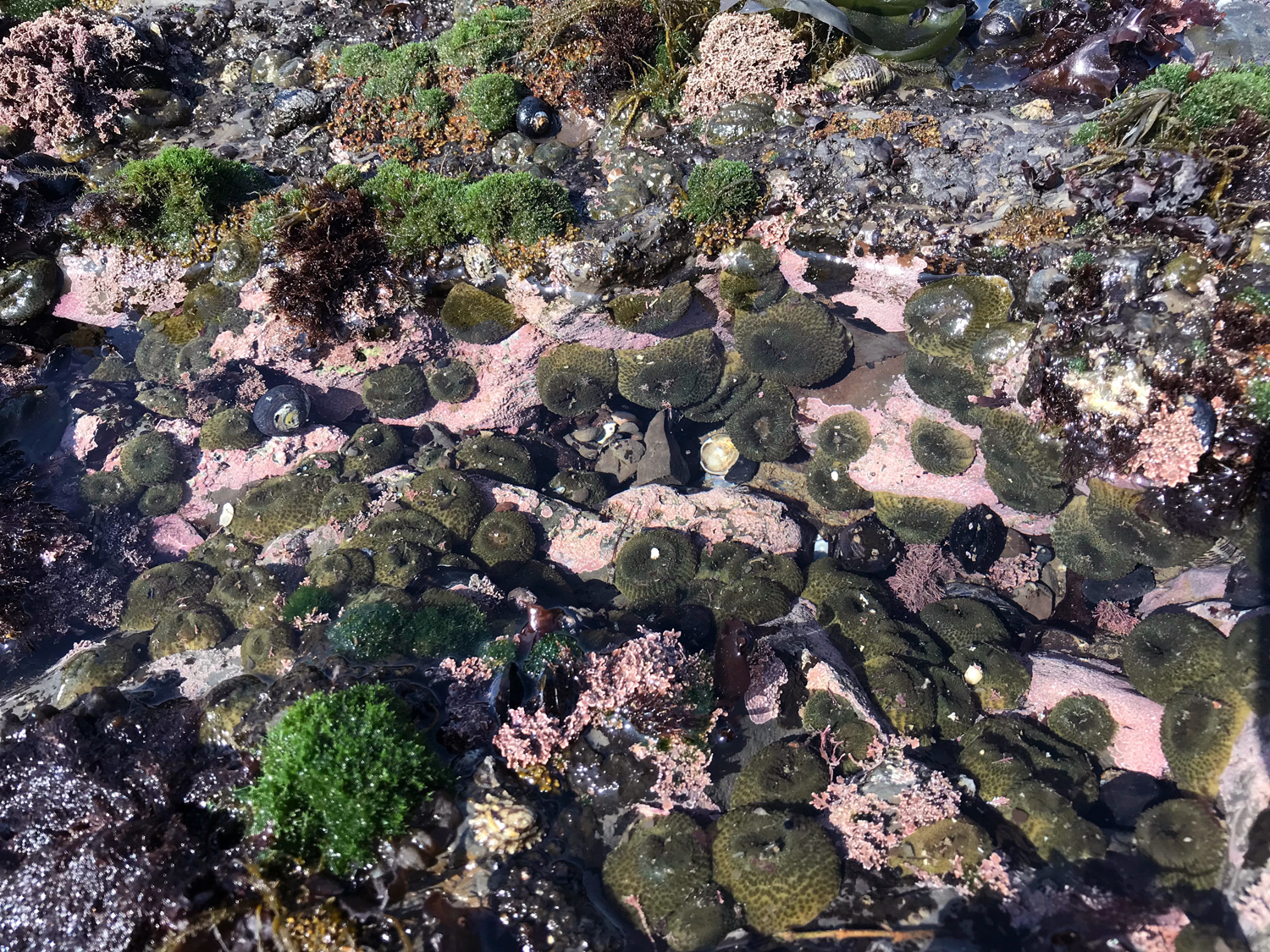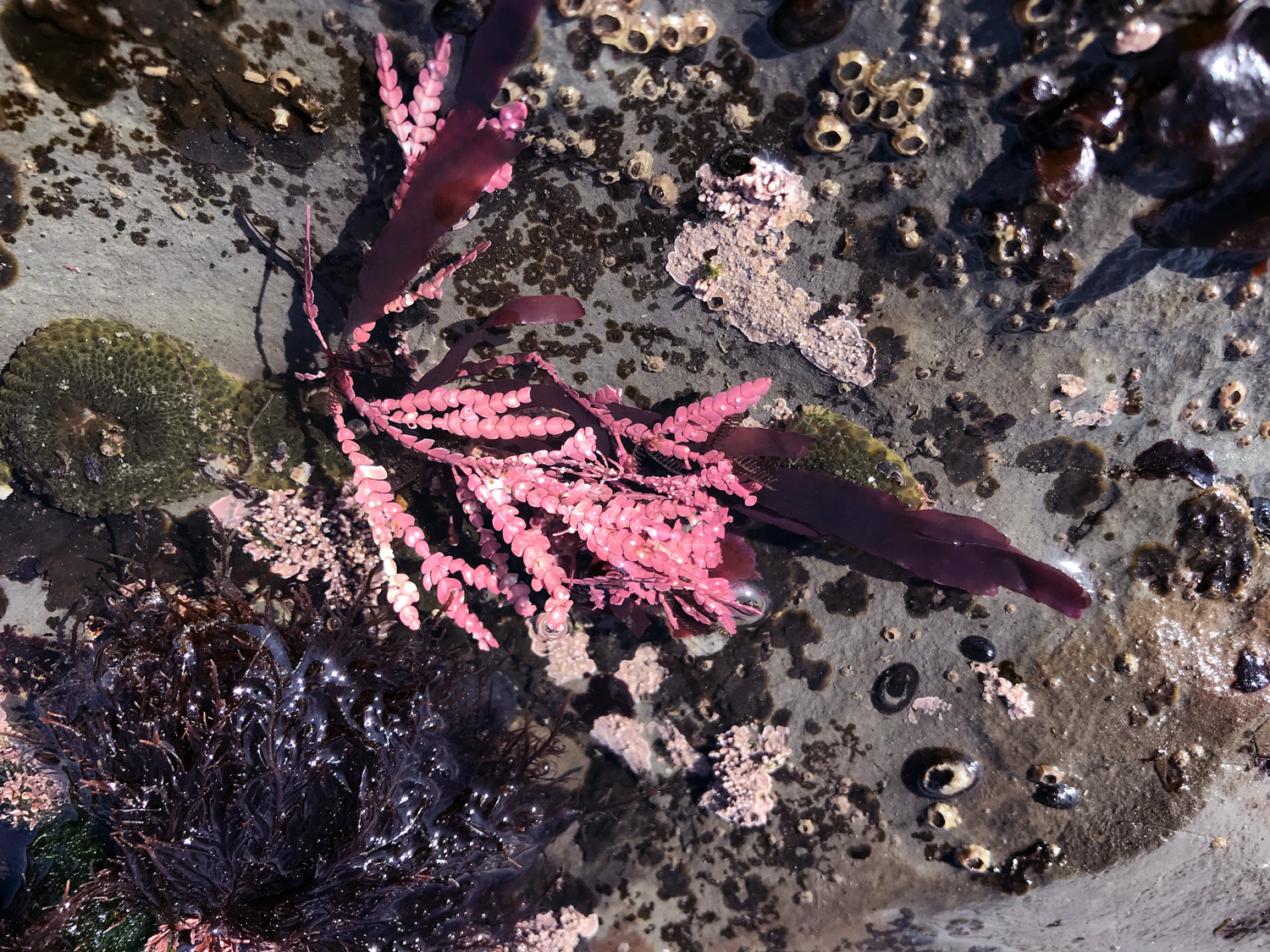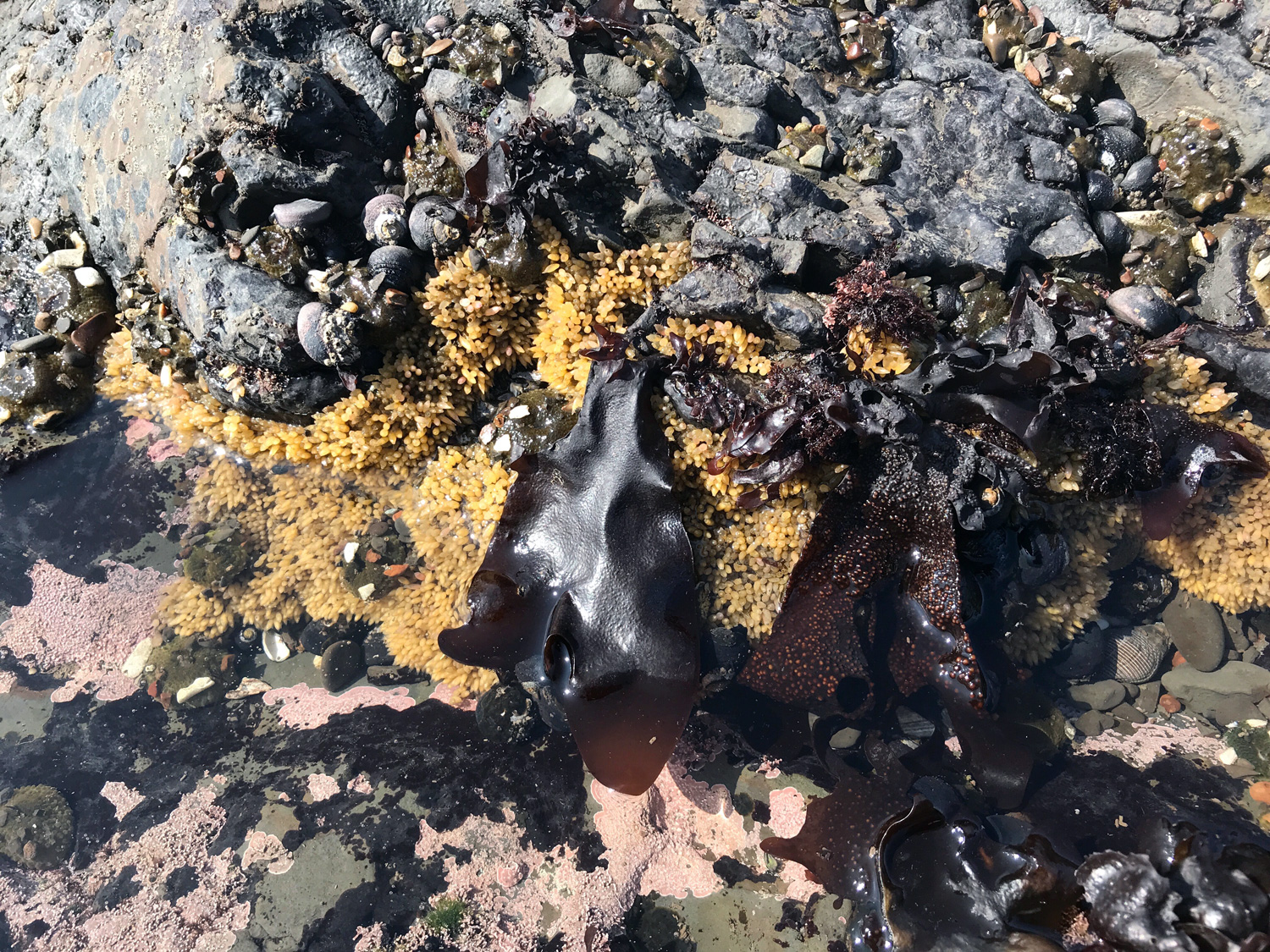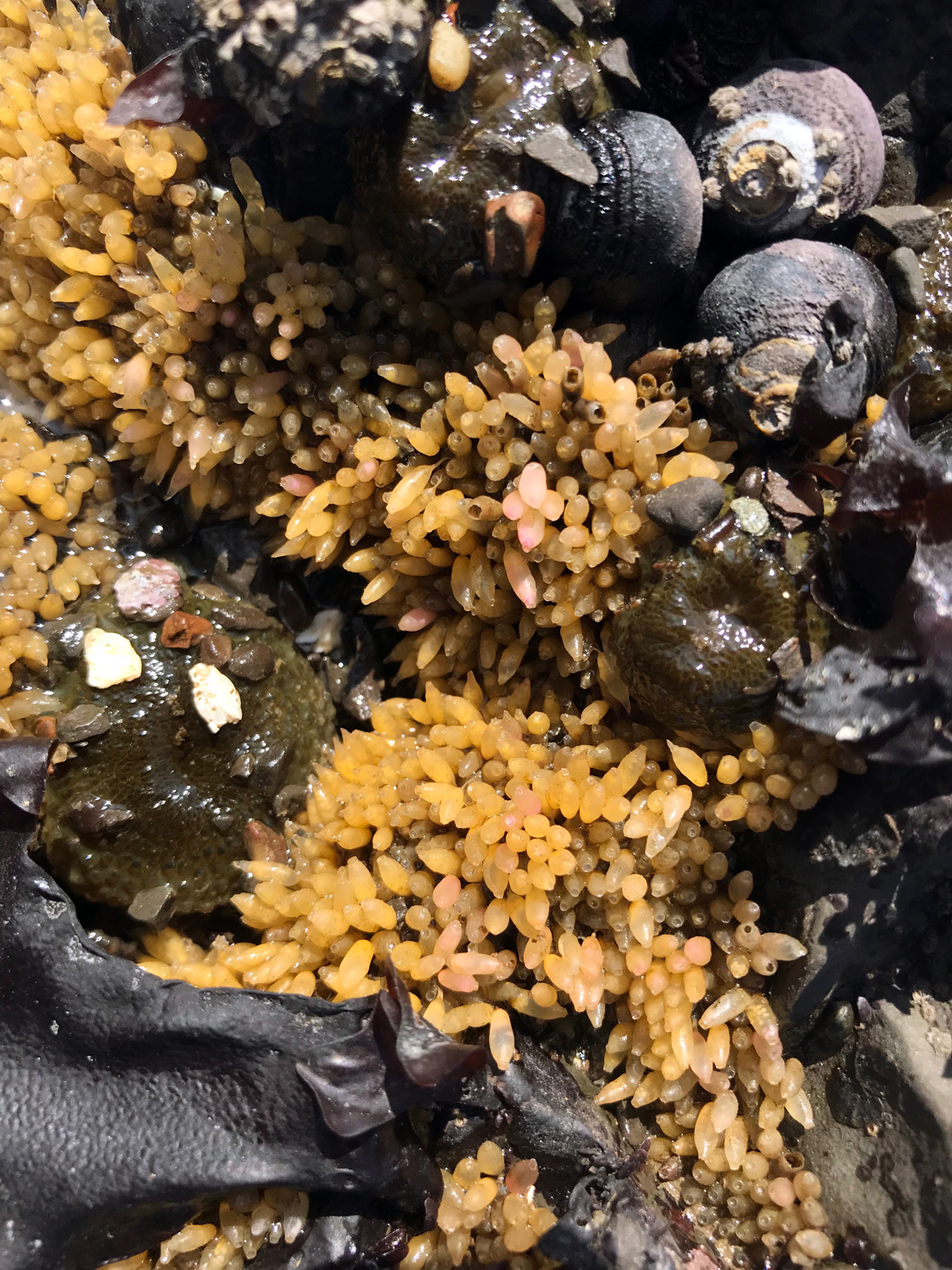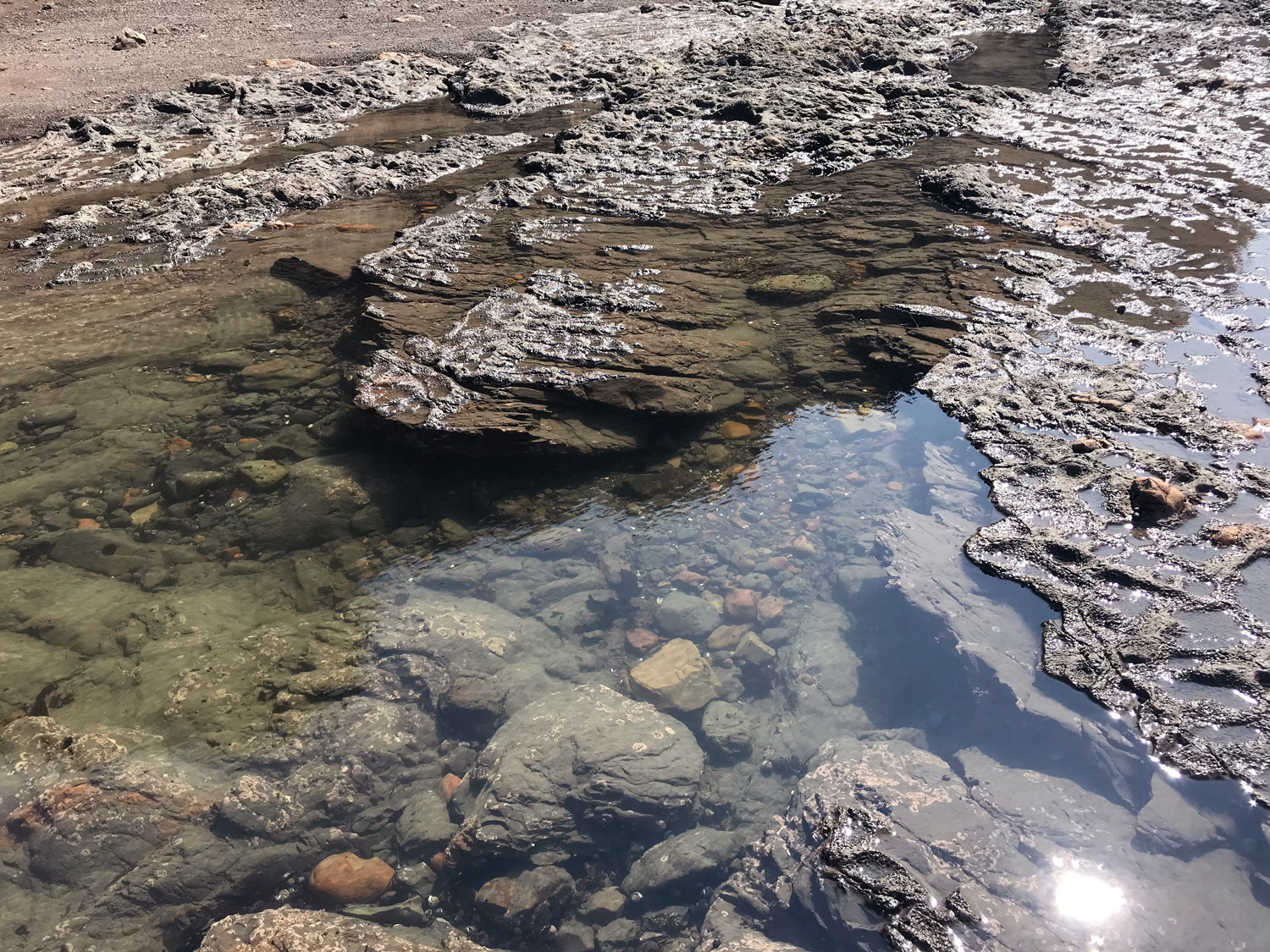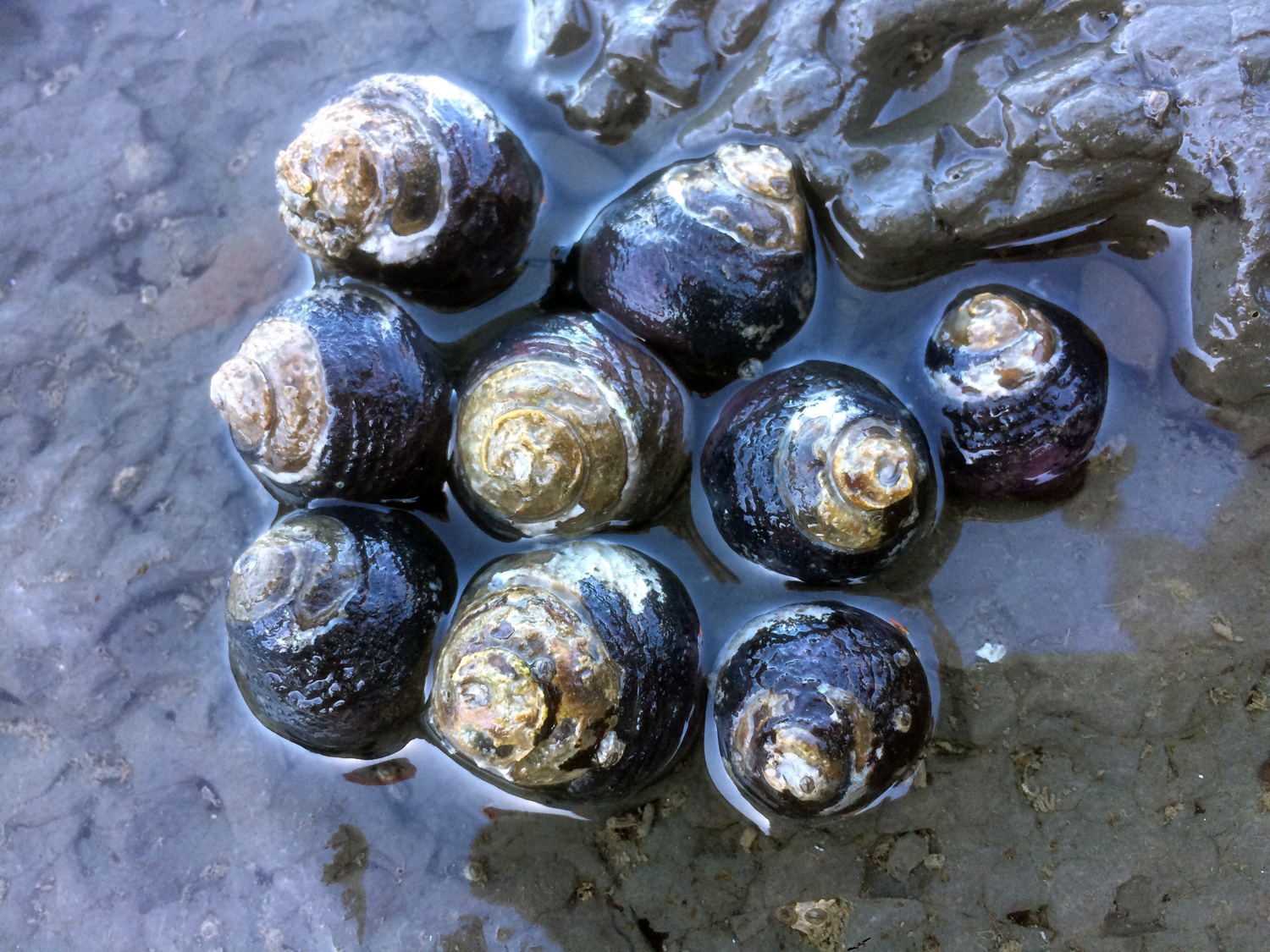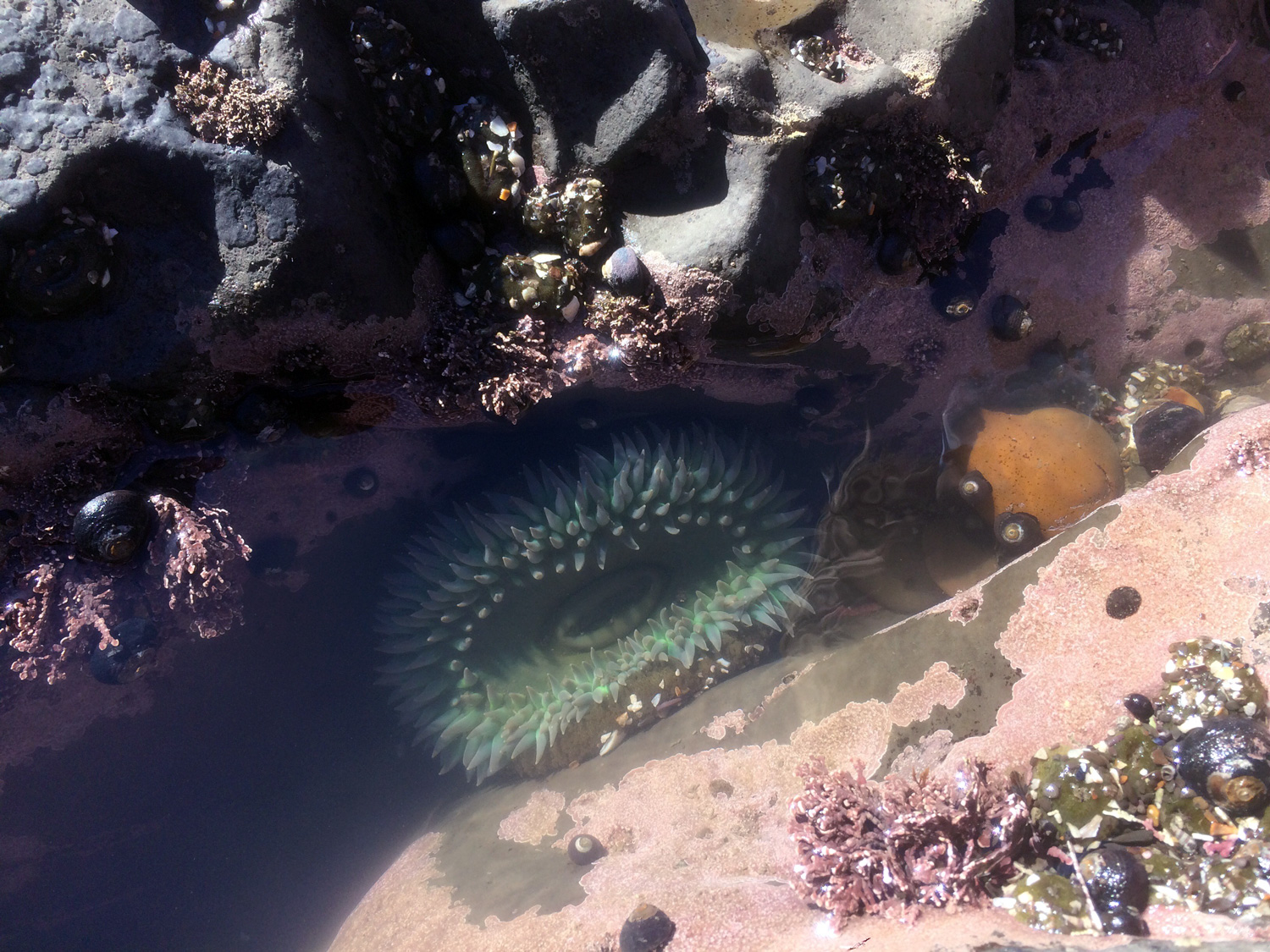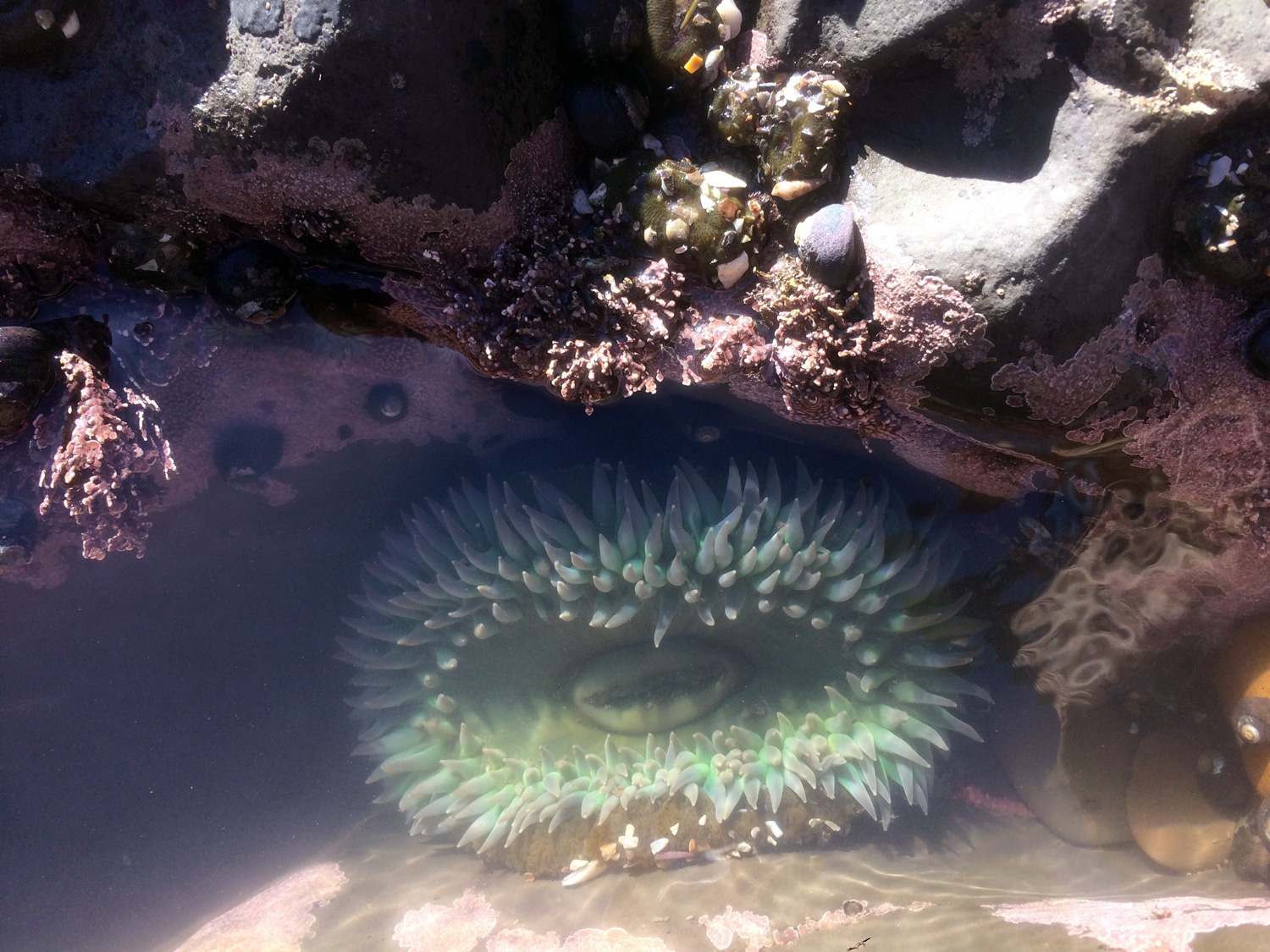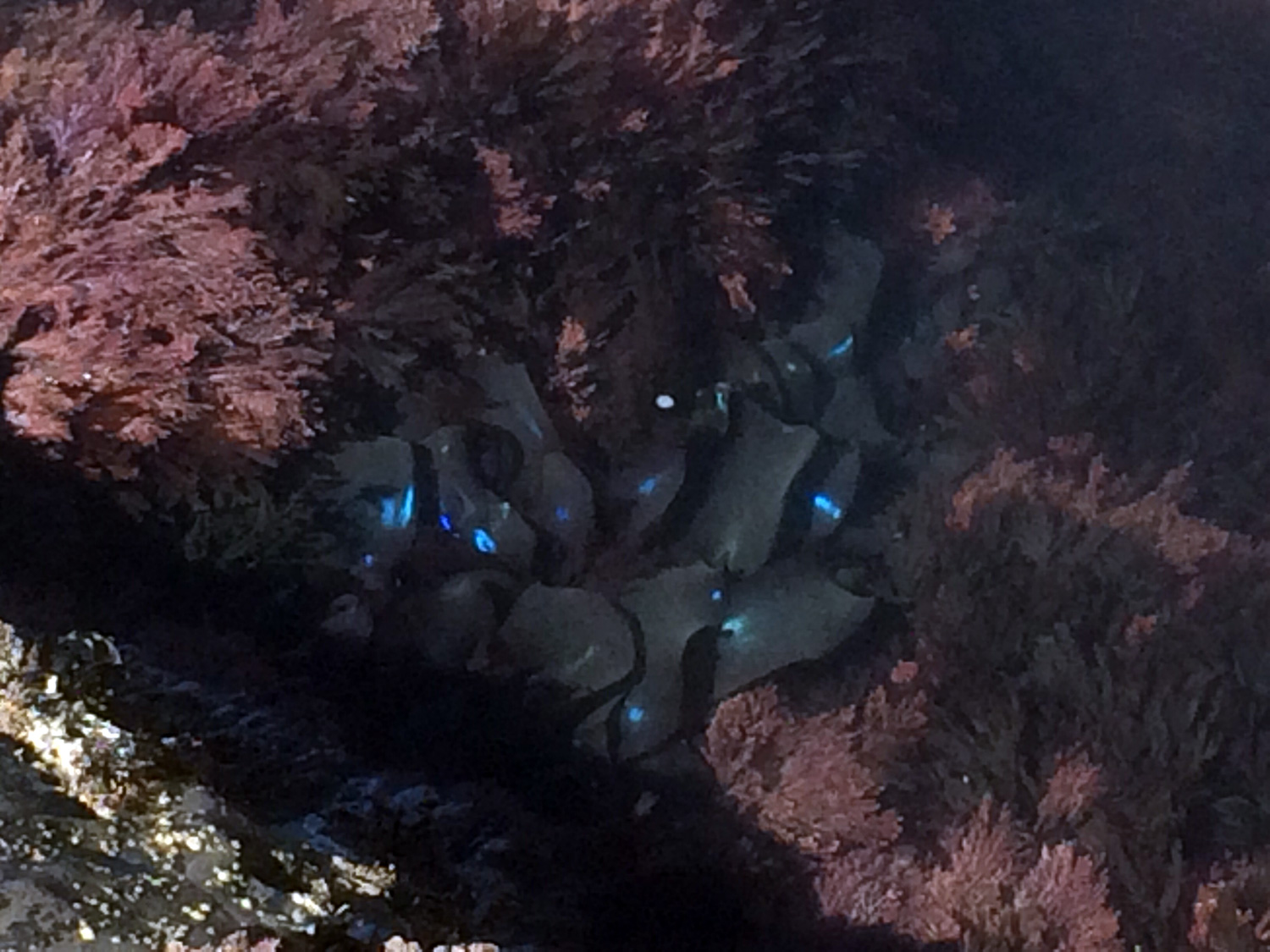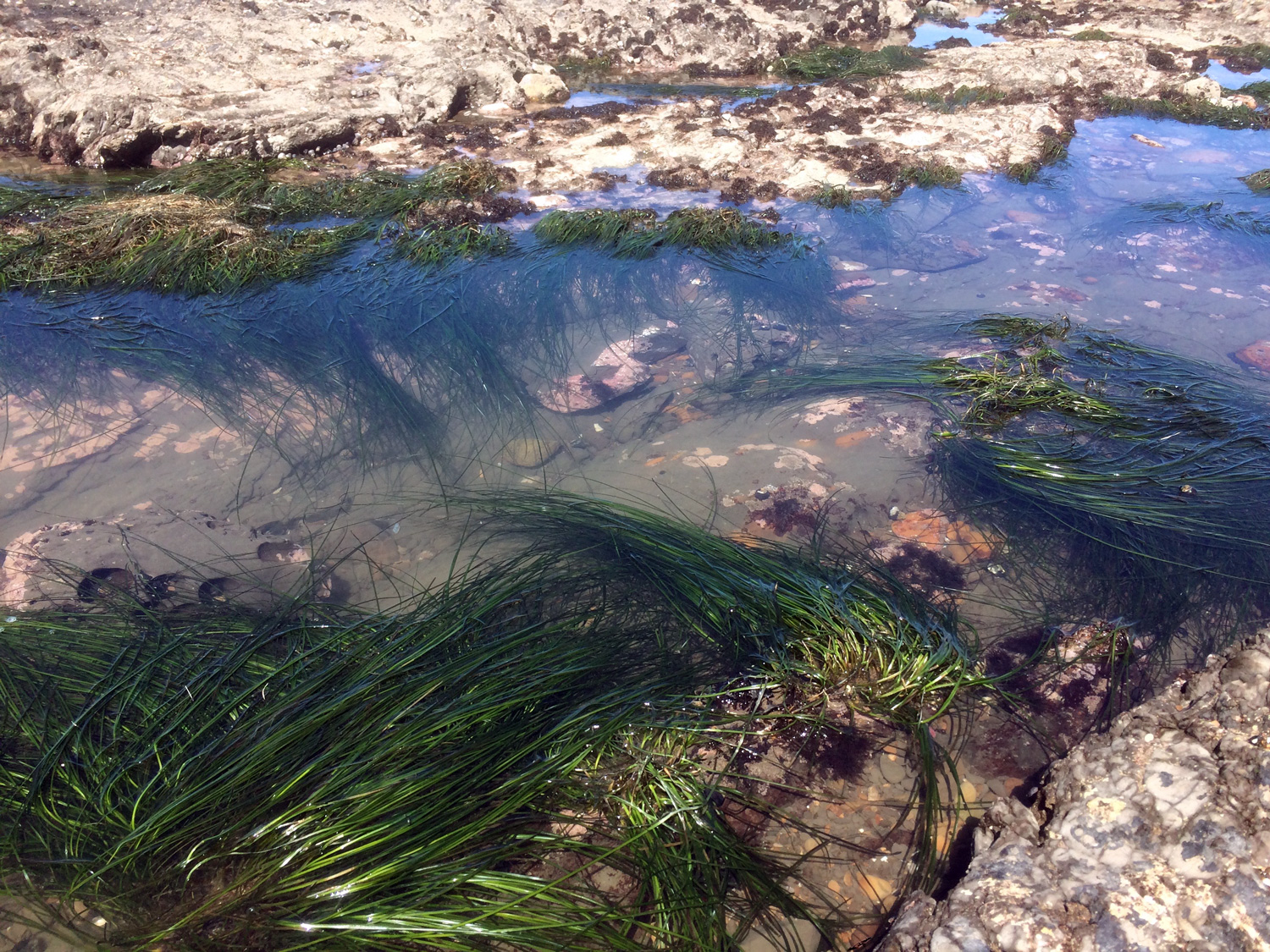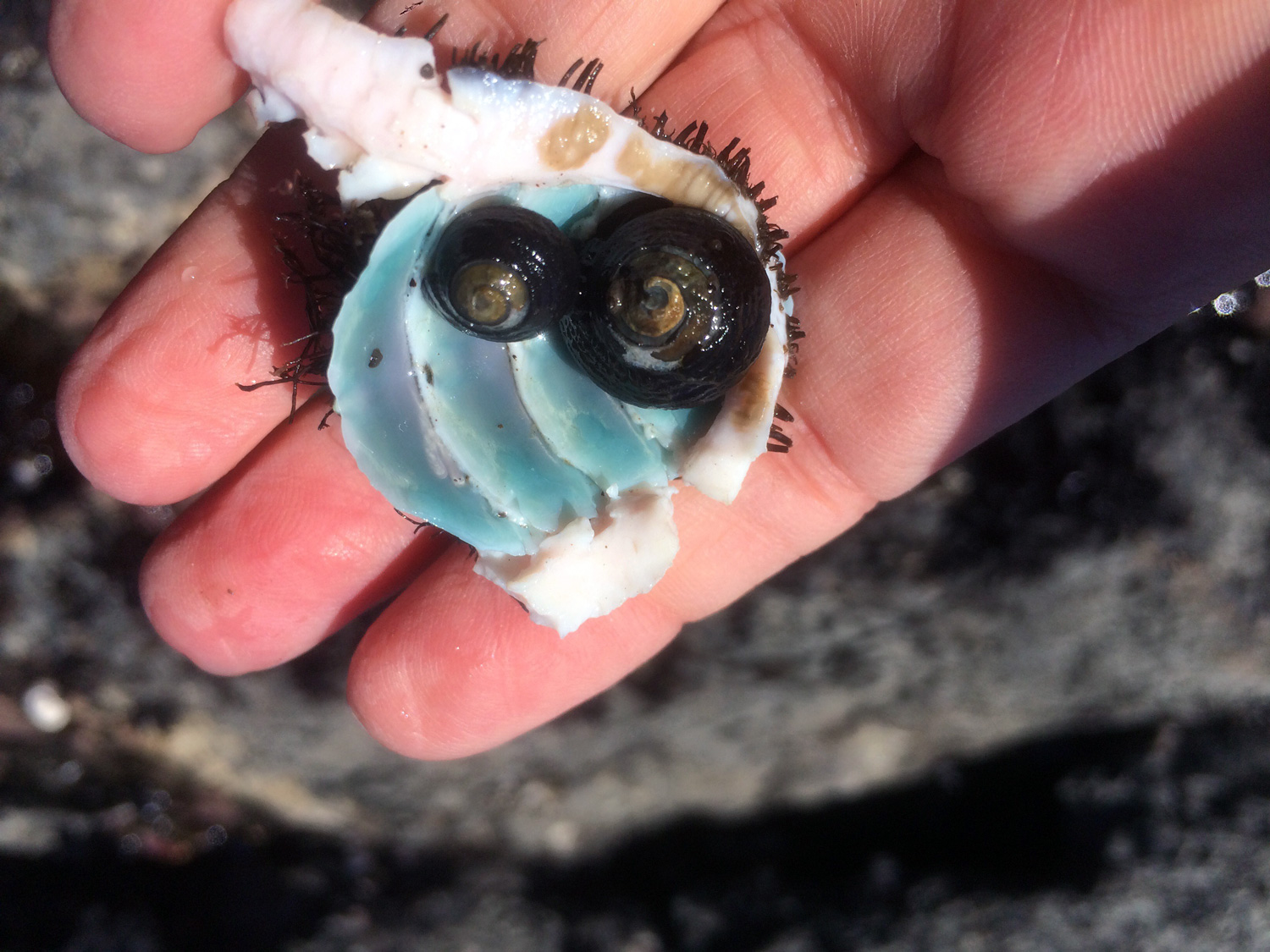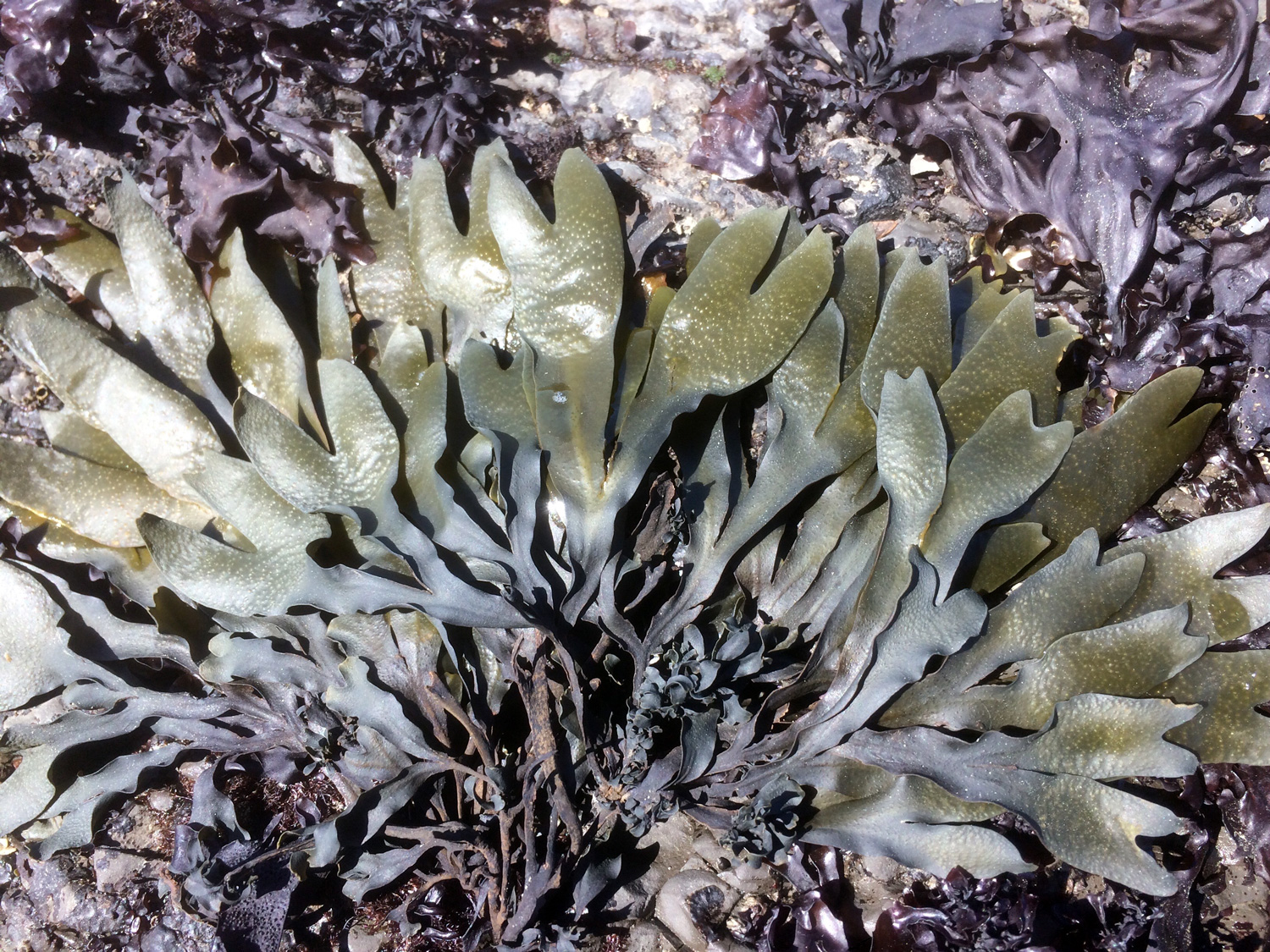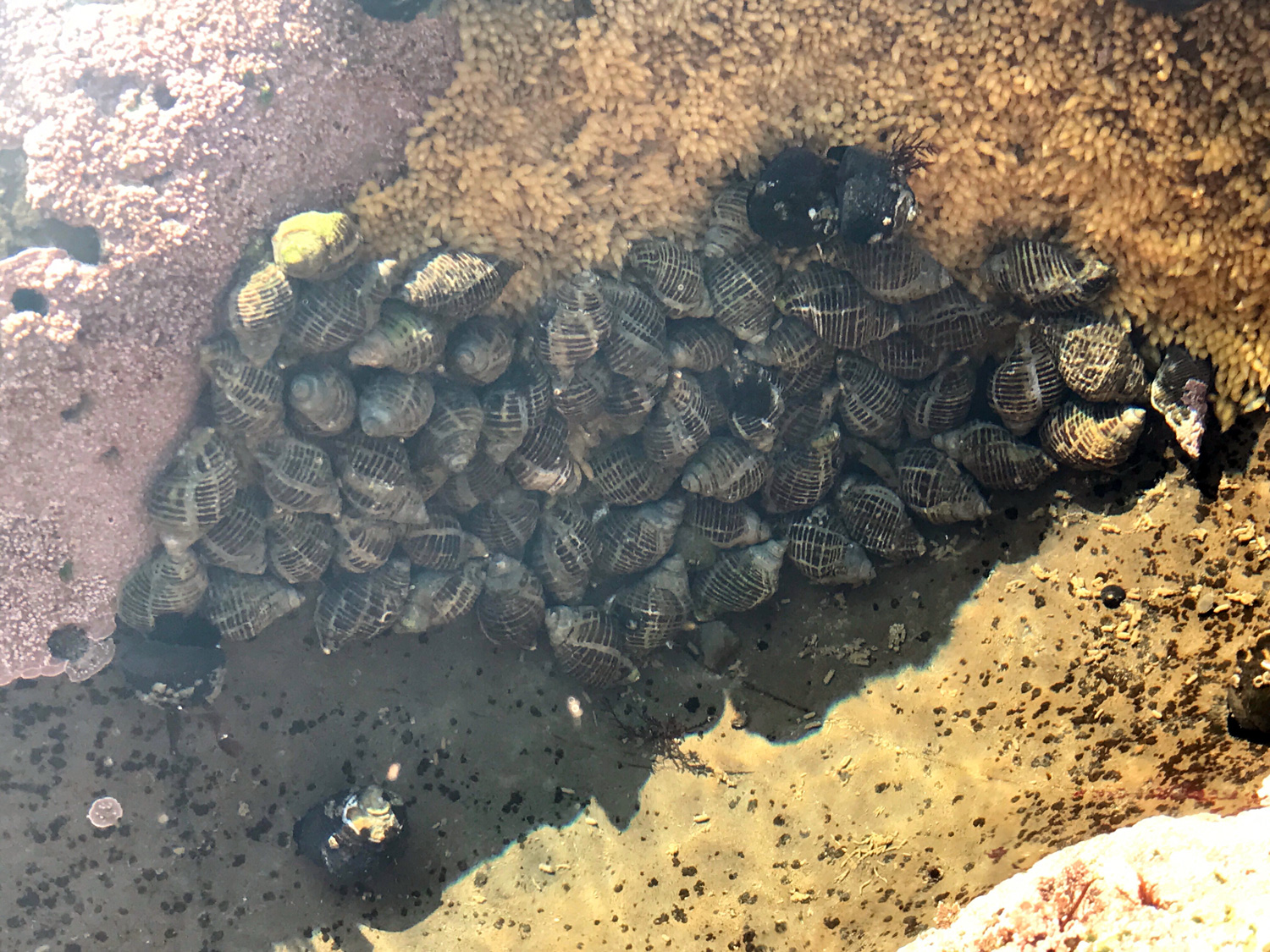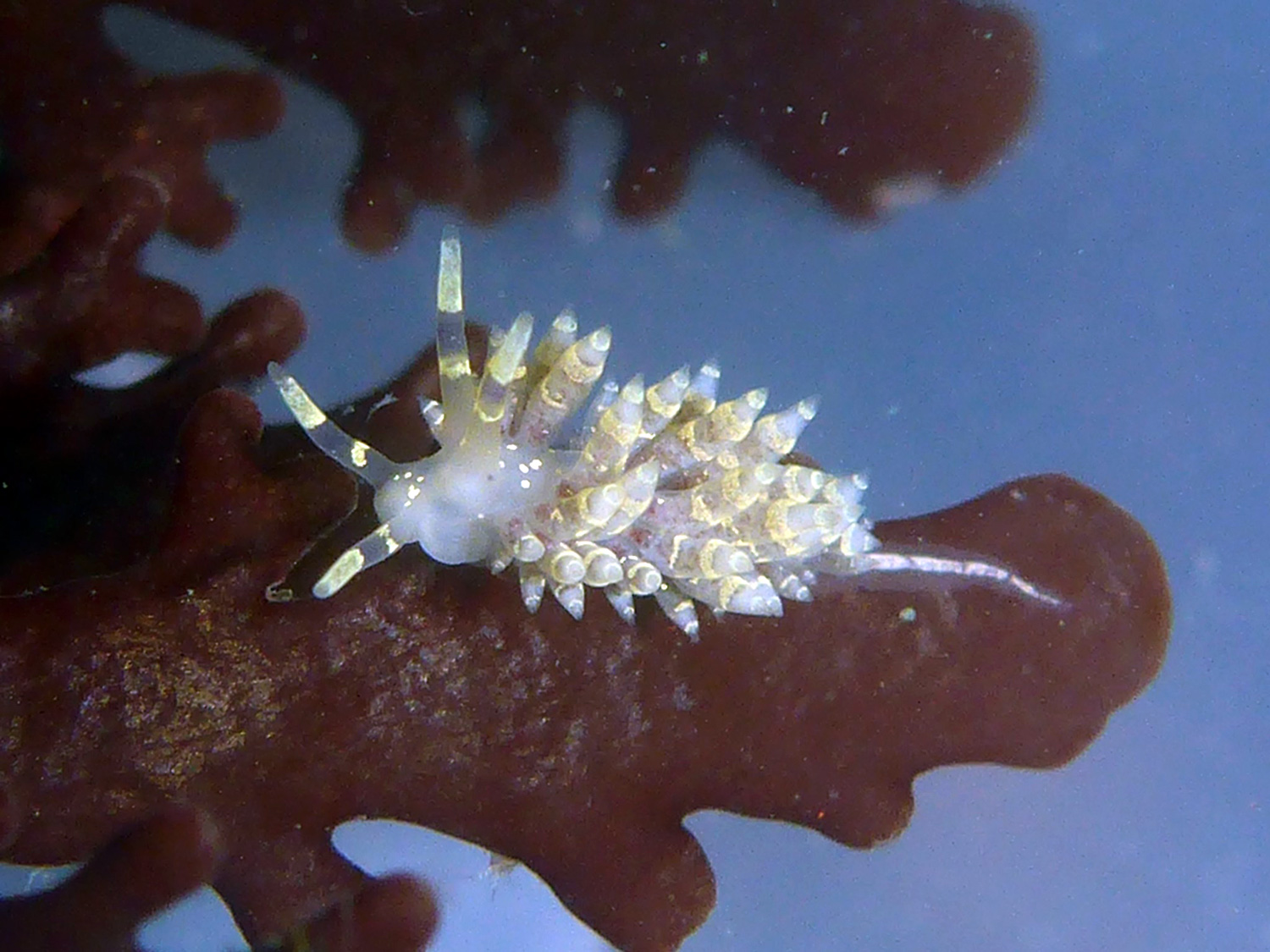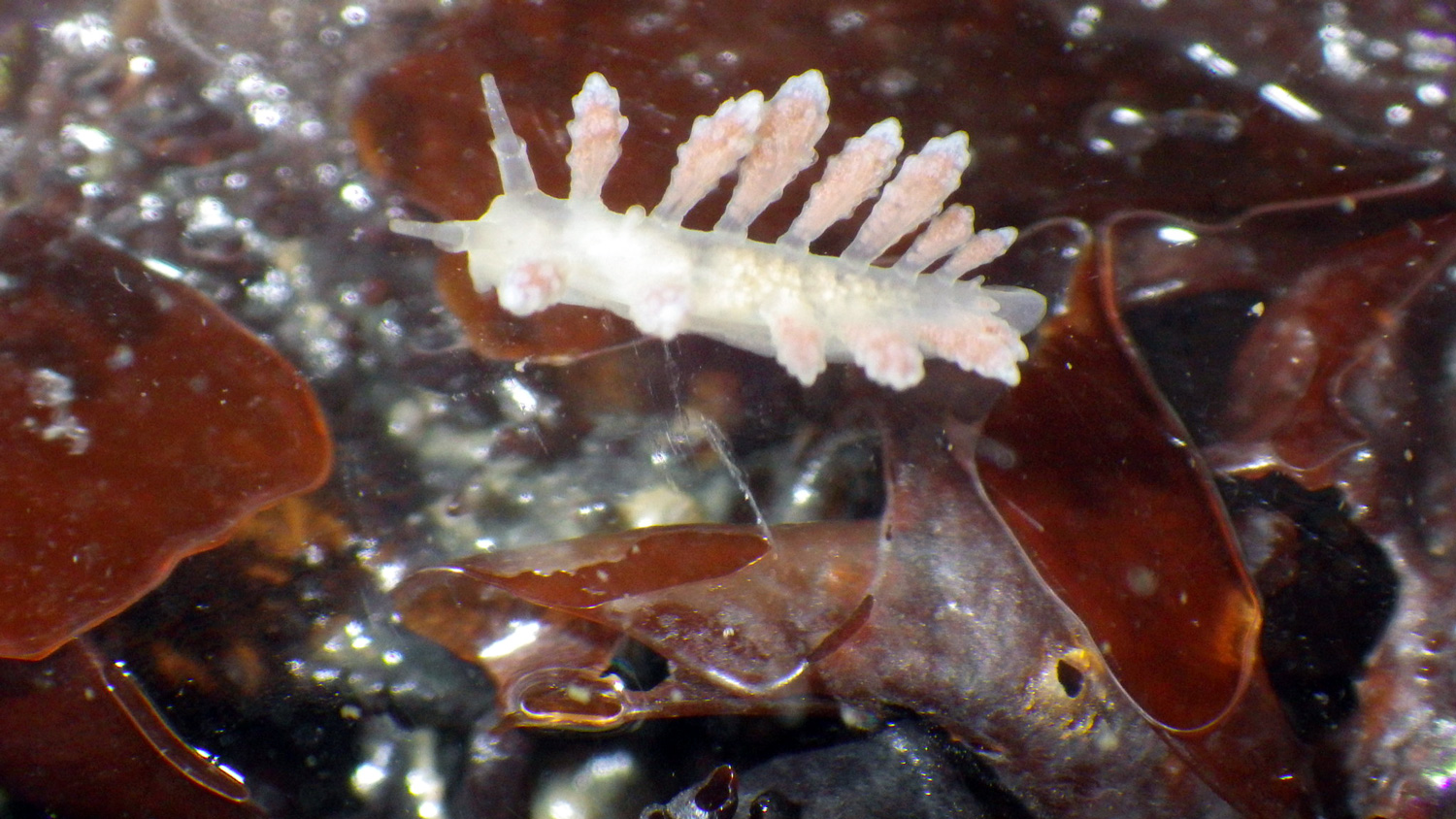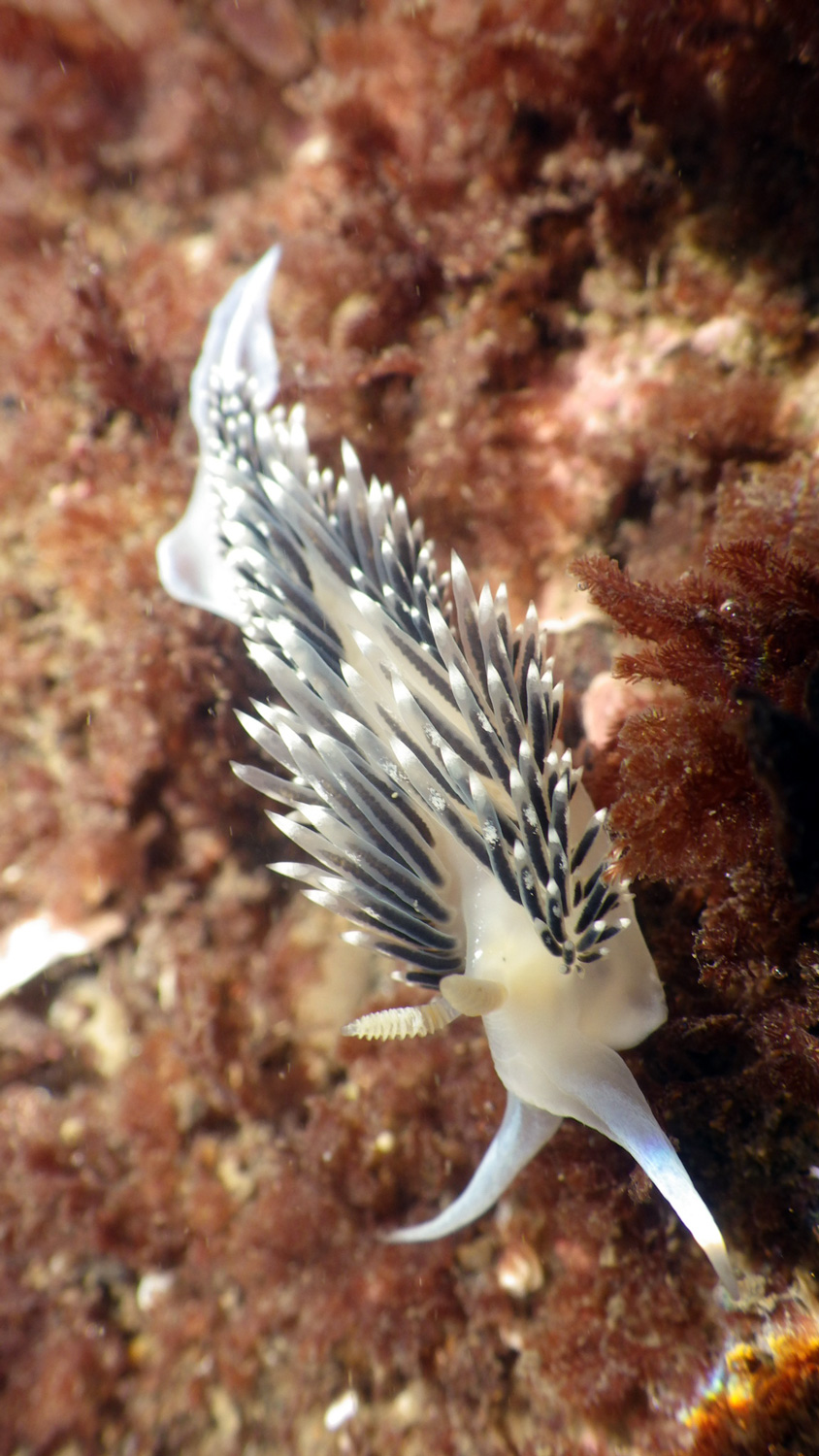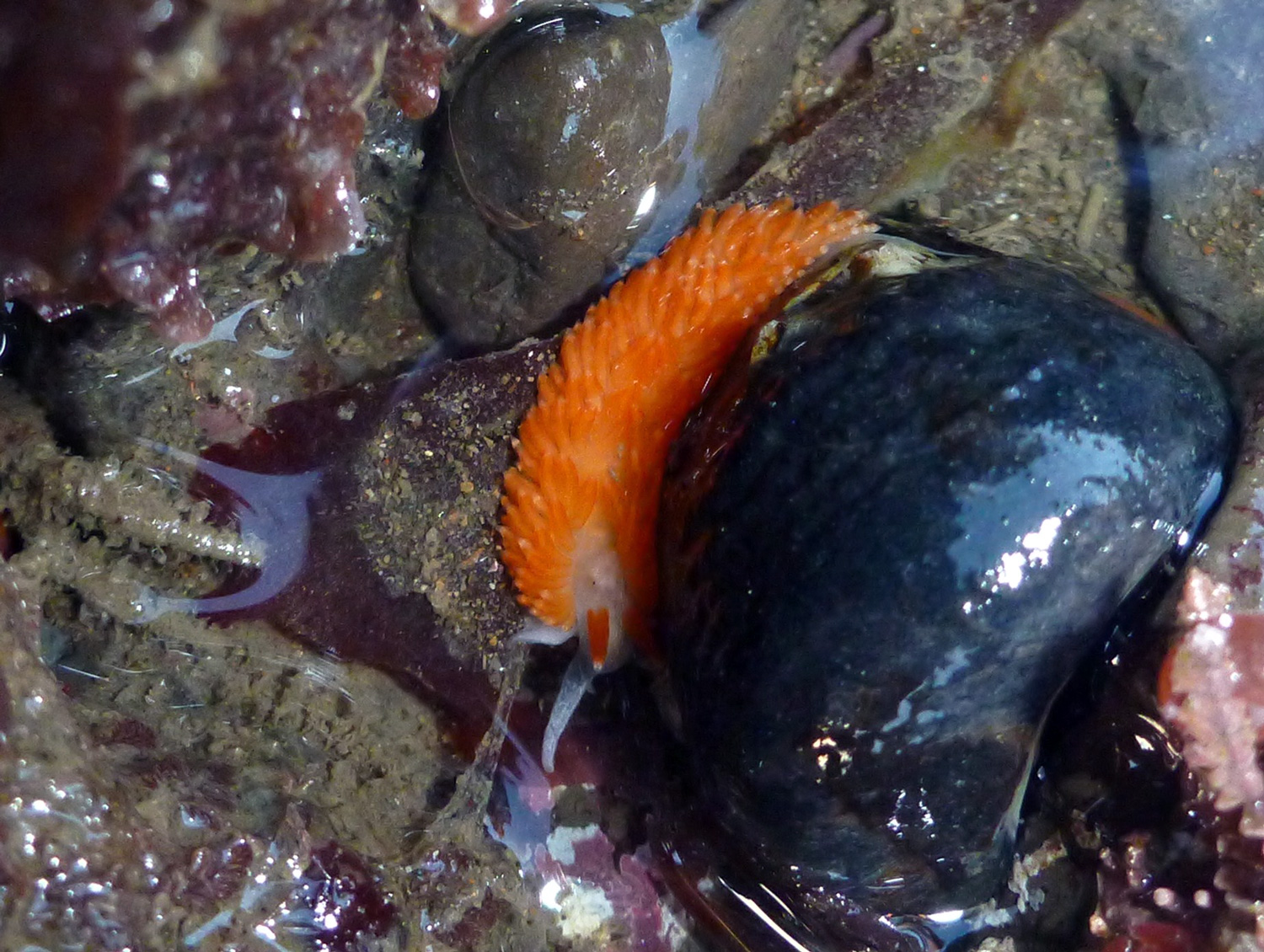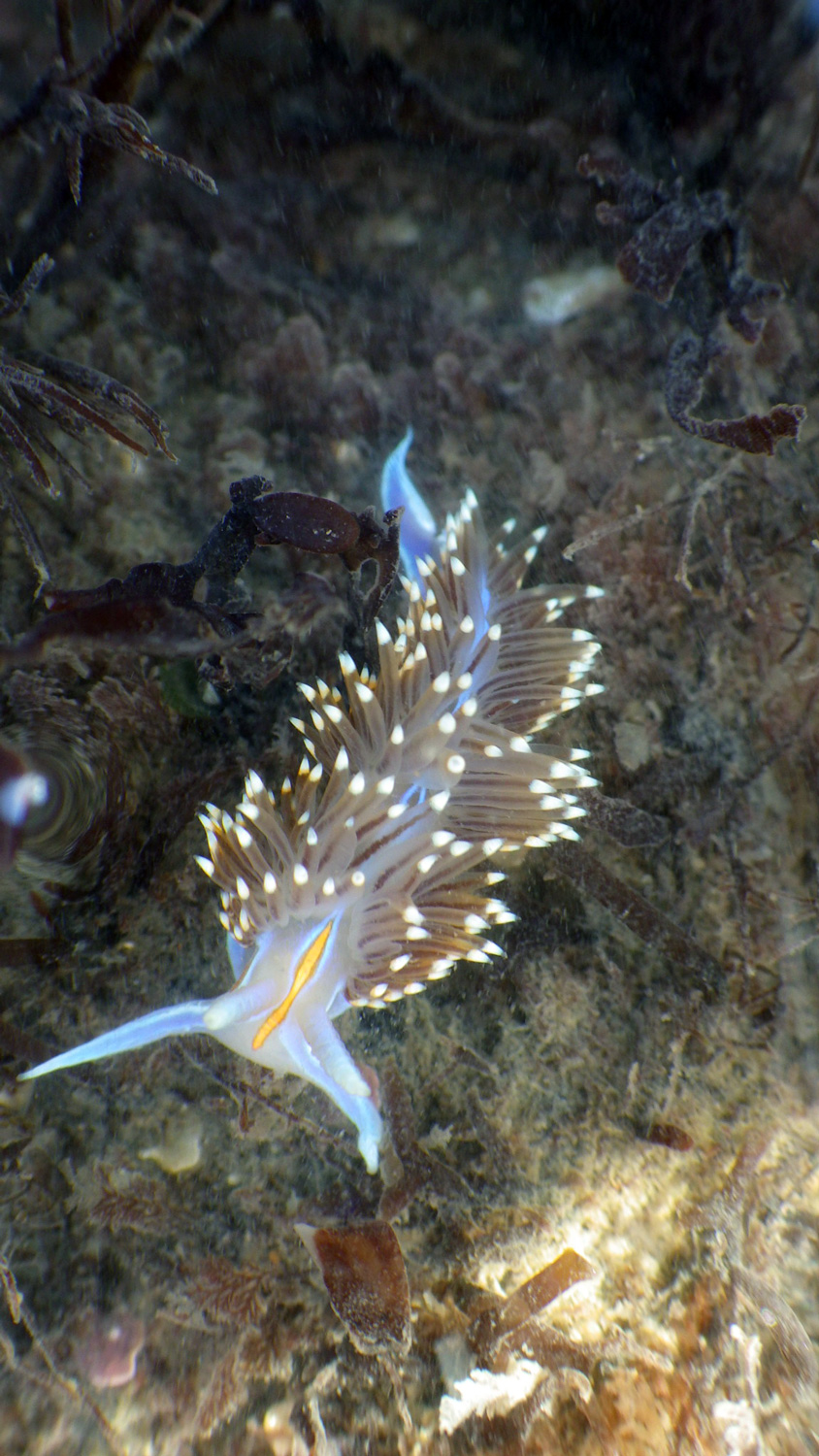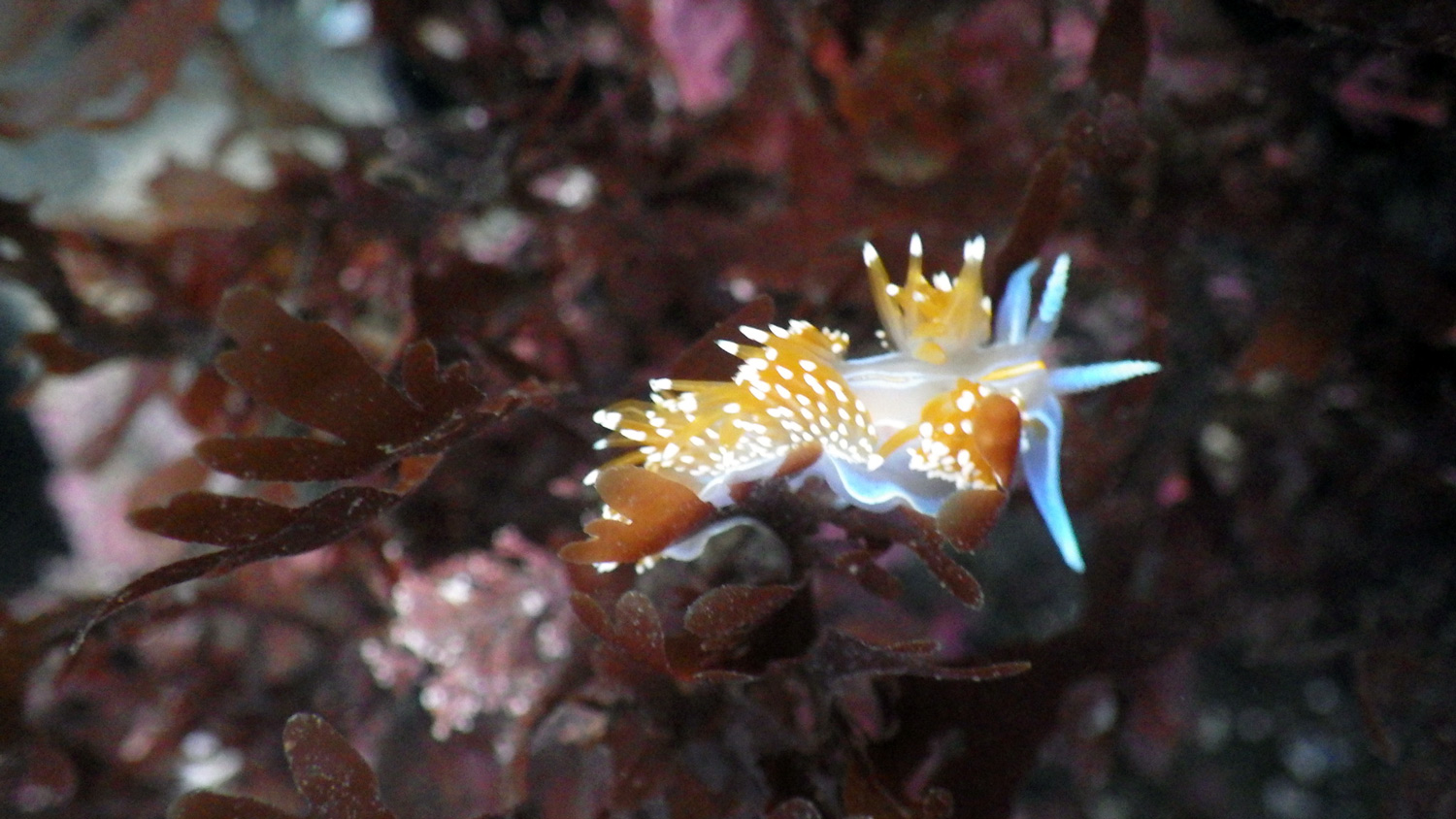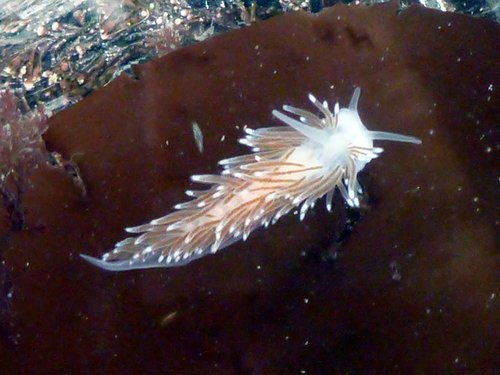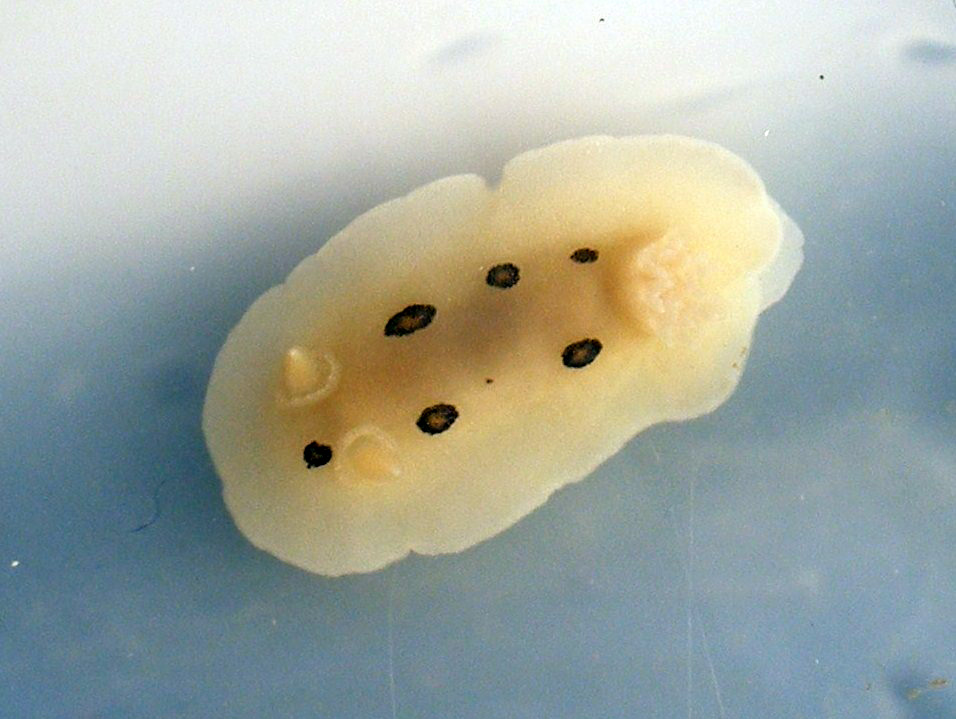Agate Beach Duxbury Reef
Terrain: sandy beach, shale reef, sandstone cliffs
Restroom? Yes, at the parking lot
Parking: large parking lot
Kid friendly? Yes
Read about Tide Pool Safety
At the southernmost end of the Point Reyes peninsula is Duxbury Reef, a large shale reef extending out from Duxbury Point at the south end of Agate Beach. You can access Duxbury Reef from Agate Beach in Bolinas. Here, you will find exceptional tide pools to explore when the tide is low. Check the tides for Bolinas before you go.
Good to know: This beach and reef are an important Marine Protected Area, the Agate Beach Duxbury Reef State Marine Conservation Area (SMCA). This means you cannot possess, damage or take any species or materials on the beach (except for hook and line fishing for finfish.) Help ensure this exceptional place thrives for future generations by stepping carefully on the rocks and observing only.
The dominant color of the Duxbury tide pools is pink. The rocks are covered in pink Coralline Algae and Encrusting Coralline Algae. You are guaranteed to find plenty of limpets, chitons, mussels, barnacles, snails, and anemone. You will need to venture farther on the reef to find the more elusive creatures that are only revealed in the lowest tides, the colorful nudibranchs and if you are very lucky, octopus.
Duxbury tidal pool life has fantastic names like Spotted Unicorn (Acanthinucella punctulate), a sea snail that lives in the upper tidal zone and Iridescent Algae (Genus Mazzaella) which glimmers blue underwater in the sunlight.
Tidal Pool Zones
There are three zones that make up the tide pool areas of California
The splash zone is higher on the rocks and is exposed at all but the highest tides. Here you’ll find things like periwinkle snails, shore crabs, fingered limpets, chitons, and acorn barnacles.
The middle intertidal zone is under water at high tide and exposed at low tide. This is where most people go tidepooling when walking around on rocks at low tide. In this zone you can see sea anemones, hermit crabs, snails, sea hares, sea stars, sea sacs, lobsters, chitons, limpets, California mussels, and small fish.
The subtidal zone is the lowest zone and it is below the reefs that get exposed at low tides. This zone can still be seen at low tide but you’ll be looking at it in the water. Larger fish swim around near shore in this zone as do red octopus. Urchins, anemone, red abalone, and larger sea stars cling to the rocks that stay submerged almost all of the time.
source: https://www.californiabeaches.com/tide-pool-zones-species-california/
Nudibranchs photographed by Lorri Gong
Lorri Gong is an avid tidepooler (if that is a word!) and an amazing naturalist. She has generously shared these stunning photos of nudibranchs she photographed at Duxbury Reef.
How to get to the best tide pools
Local Marin County naturalist, Wendy Dreskin describes how to get to the best tide pools and what you'll see there in her article on Duxbury Reef from May 2017:
"Plan to arrive at least an hour before the low tide. Go down the path to the beach and turn left. It’s hard to walk past the crabs and limpets of the high tide zone, but the goal is to see the low tide zone life first. You can explore the higher zones as the tide turns. Climb some steeply sloping rocks with goose barnacles and mussels attached and you’ll find yourself on a beach you couldn’t see before. Walk until you see the reef. There are some rocks that look a bit like a wrecked boat at the far end."
She also explains how Duxbury Reef got its name: "The reef is named for a ship called the Duxbury, a three-masted schooner that sailed from Boston in 1849 loaded with gold-seekers. It missed the Golden Gate in the fog and ran aground. Passengers and crew managed to free the ship from the rocks and it reached San Francisco the next day."
For a helpful overview of tidepooling, read the article in Bay Nature How do I start out tide pooling.
Volunteer Opportunity: Marine Protected Area (MPA) Watch
“MPAs protect the diversity and abundance of marine life, the habitats they depend on, and the integrity of marine ecosystems. ”
Since August 2017, I've been volunteering with the Marin Marine Protected Area Watch (Marin MPA Watch). Marine Protected Areas are important, vulnerable coastal waters that have been designated for protection under California State Law. Volunteers do a simple survey of activity on the beach and offshore (using binoculars). Volunteers are vitally important to provide this survey information which informs MPA management and the California Department of Fish and Wildlife.
Using iNaturalist to record the diversity of life I encounter on the beach, I tag it to the "MPA Watch Project". This provides a useful snapshot into what's being protected - at least onshore.
It's relaxing, engaging, and it's given me a reason to learn about tides. I've had interesting conversations and always find something that attracts my attention along the way.
If you are interested in volunteering with the Marin MPA Watch, visit the Environmental Action Committee's MPA website.


